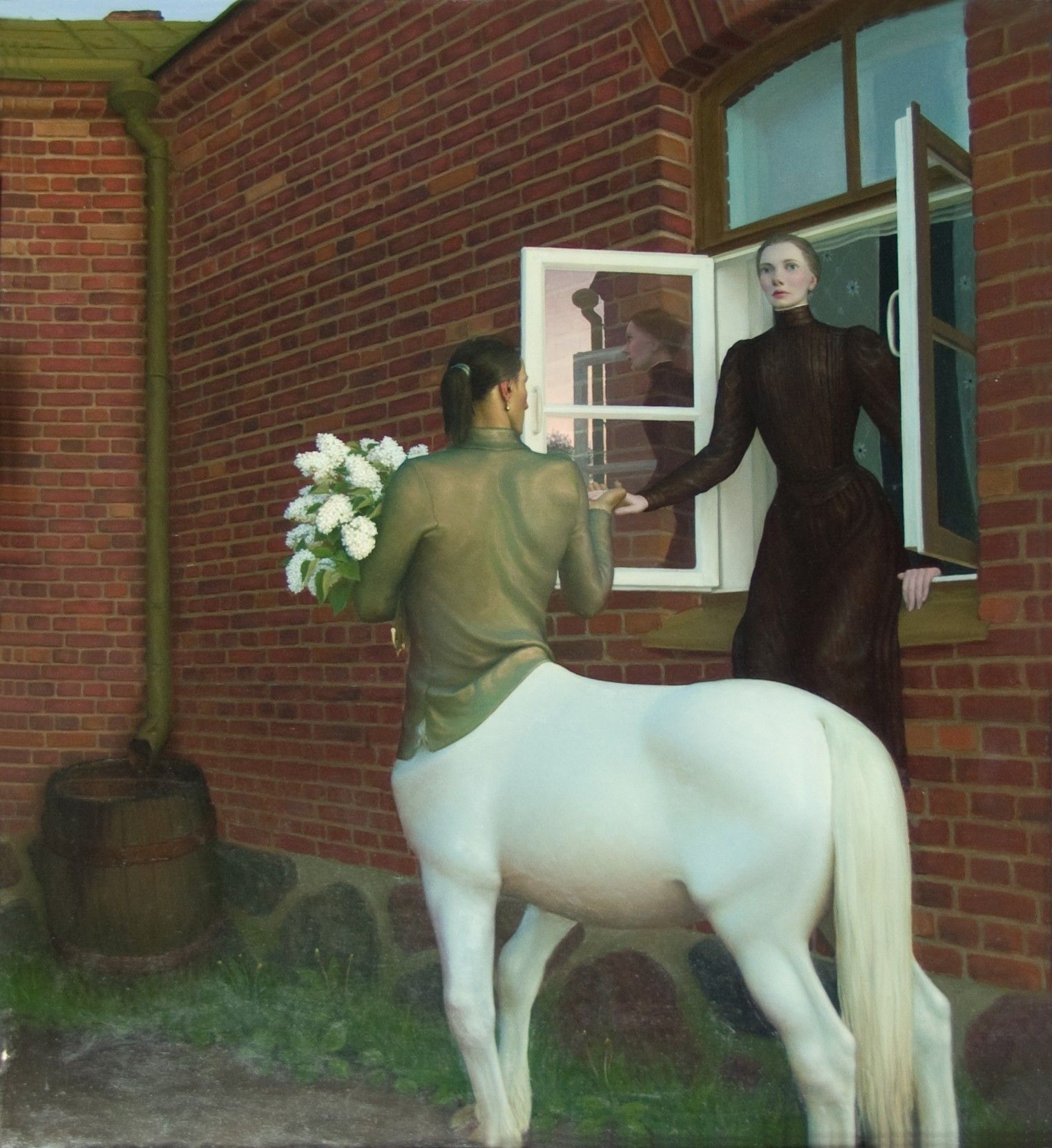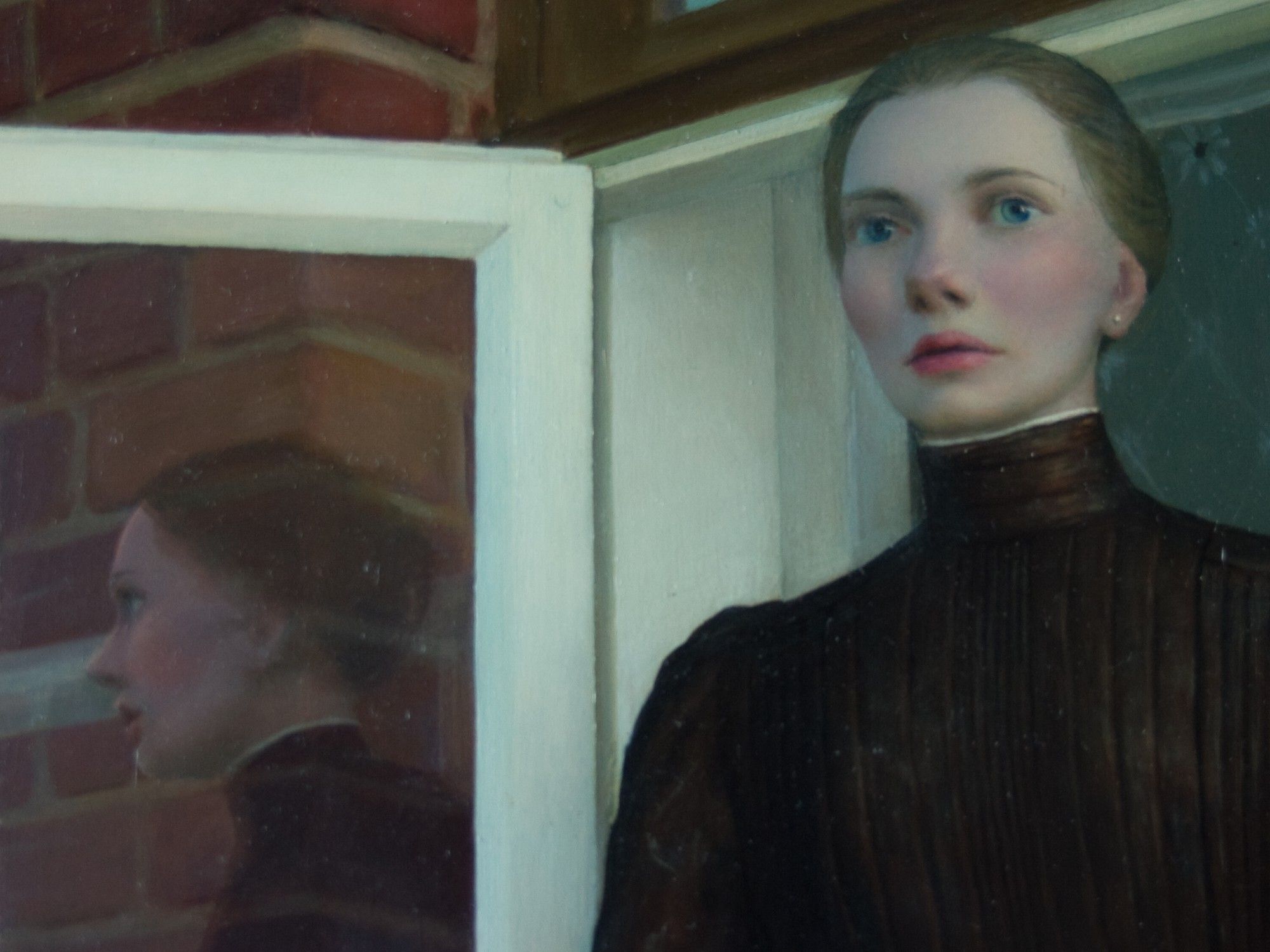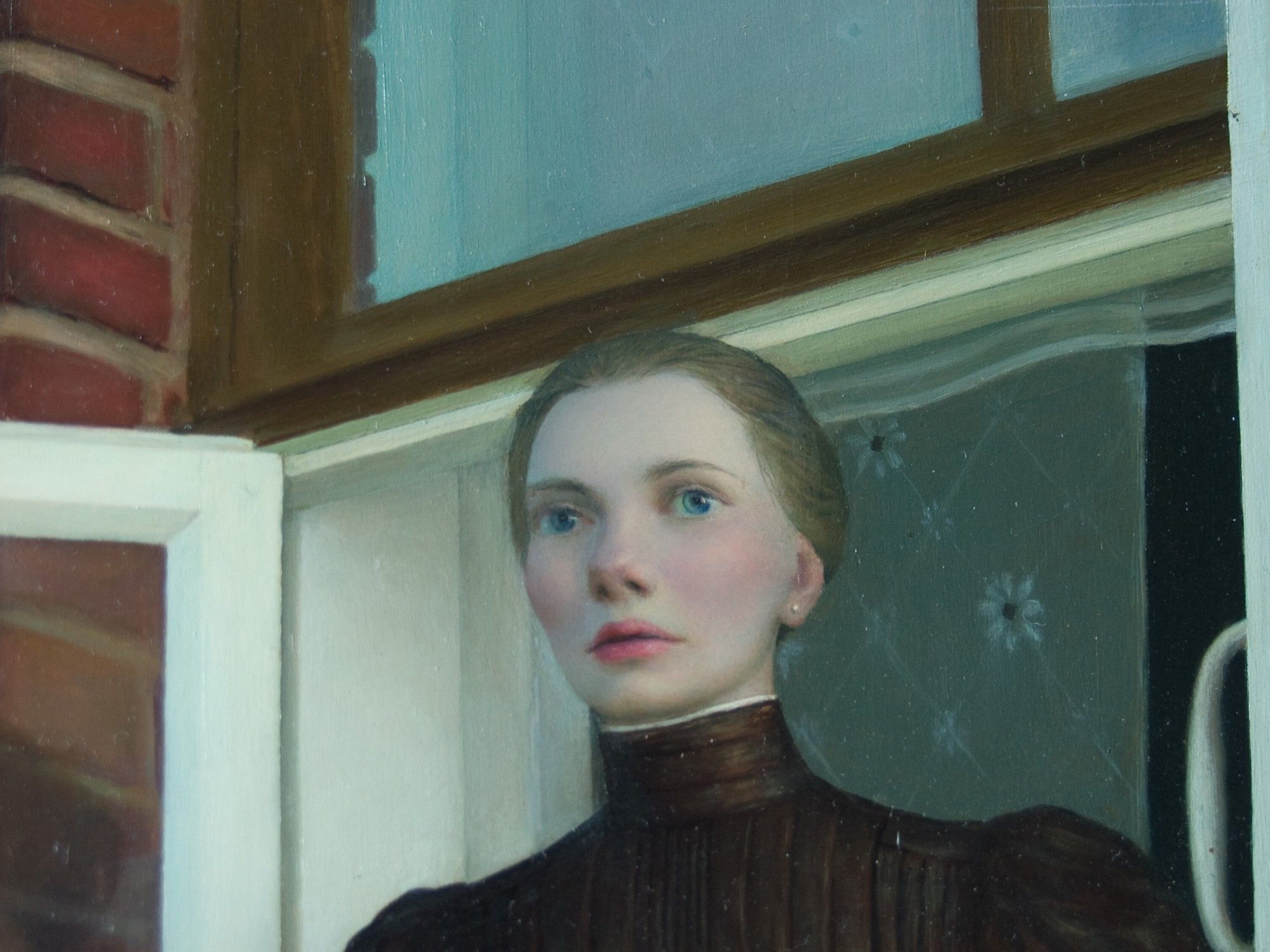Витебский живописец Кухто Сергей Васильевич (1959-1999)
Витебский живописец Кухто Сергей Васильевич (1959-1999)

Сегодня хочу познакомить Вас с одним невероятным витебским художником – Сергей Кухто. А тем, кто уже знаком, полагаю, будет любопытно узнать ещё больше о нём, о его творчестве или просто снова посмотреть эти сказочные работы, хотя бы на фото.
Я давно собирался написать свои мысли об этом необычном художнике. Однако, всё никак не мог решить, как именно писать, с какой стороны подходить к его творчеству. То ли рассматривать его работы детально, как искусствовед, вникая в символику и историю создания, расписывая и объясняя многочисленные нюансы живого творчества. То ли рассказать о нём с точки зрения зрителя, постепенно погружая в тему. В итоге решил начать с начала, а там как пойдёт уже.
В первую очередь приведу небольшую справку о нём. Сергей Васильевич Кухто (22 апреля 1959, Витебск – 1 ноября 1999, Витебск) – живописец мифологического жанра. В 1978 году окончил Минское художественное училище им. А.К. Глебова. Экспонироваться начал с середины 1990-ых. Работы находятся в частных коллекциях Чехии, Голландии, Швейцарии, США, Израиля, России, Беларуси.

Информации, различных текстов и фотографий работ очень много, в одну статью не втиснешь. Потому я решил разделить на отдельные небольшие заметки.
Эта же статья будет вводной и сборной, чтобы сориентироваться в материале. Их лучше всего читать по порядку, начиная с первой.


Также прикладываю ссылку на сайт, посвящённый Сергею Кухто. Насколько мне известно, официальный.
Там довольно подробно описана история жизни автора и много впечатлений от разных людей, описаний и разборов творчества от искусствоведов. Кому интересно может там полазить и почитать. Дублировать информацию тут не вижу смысла.
Однако пару видеороликов представлю.
Выпуск телепередачи «Росчырк Часу» ТелеРадиоКомпании «Витебск» о творчестве Сергея Кухто
Экскурсия по выставке картин Сергея Кухто. Проводит сын художника — Владимир.
Как я познакомился с творчеством Сергея Кухто
С творчеством художника Сергея Кухто я познакомился на его первой выставке. И, к сожалению, она была уже в память об авторе.
О существовании художника Сергея Кухто я узнал когда мне было около тринадцати лет. В местной газете, вроде бы Витебский Курьер, напечатали небольшую заметку о трагическом событии. Витебск остался без большого мастера.

Тогда ещё к заметке была прикреплена фотография работы «Хирон со спартанками». Две прекрасные девушки и кентавр, бредущие по берегу моря. Просто мечта. Меня очень впечатлила эта работа. И до сих пор остаётся одной из самых любимых мною в творчестве Кухто. Хотя, конечно, есть и другие замечательные работы у него. Но тут же как любовь, если запала в душу сразу, то уже никуда не денешься.



Я долго сидел и рассматривал в газете эту небольшую фотографию. Я никак не мог представить себе, что у нас, в Витебске, в небольшом городке, таком далёком от мира большого искусства – есть вот такой художник. И он создаёт работы, как в лучших музеях мира. Даже больше, ведь здесь, в этой работе, очень хорошо чувствуется современный подход. Это неуловимое чувство, но оно есть. Нету скованности и зажатого сюжета как в старину. Я будто бы там рядом стою и вижу как Хирон идёт по берегу моря, неспешно беседуя со спартанками. В старину такой сюжет выстроили бы иначе.
А после я попал на выставку работ Сергея Кухто. Это была первая его персональная выставка. И уже в память об авторе. В последующем я был на всех экспозициях, которые открывались в Витебске. И до сих пор каждый раз нахожу что-то новое в этих необыкновенных работах.
Но вернусь к тому времени, на дворе 2000 год и большая толпа народу медленно протискивается в маленький выставочный зал музыкальной гостиной. Сегодня такого столпотворения на выставке уже не встретишь. К сожалению, люди не так активно интересуются искусством. Однако вернусь в зал. В помещении очень шумно и душно, так как все обсуждают и делятся впечатлениями от того, что видят. Рассматривать работы было сложно, в зале темновато, штатного освещения сверху явно не хватает. Между прочим, этот зал до сих пор такой же.
Сразу от входа на уровне глаз висит первая работа. Больше ничего не видно, дальше не продвинуться. Я увидел небольшого размера картину. На ней кентавр, посреди зимнего пейзажа. Уже само по себе необычно, так как сей персонаж родом из мифов тёплой и солнечной Греции. В любом случае уж точно не из мест, покрытых снегом. На кентавре тёплая одежда необычного покроя с ромбовидным узором. А на голове шляпа. Я сразу подумал, Наполеон, и одежда как раз. Пейзаж же наоборот, вполне привычный. Заснеженное поле, скромные остовы небольших деревцев и веточек, проталины виднеются. Сразу от края идёт крутой склон вниз. Перила из грубых палок, уходящие к деревенскому домику внизу. В окнах дома горит тёплый свет. И кентавр смотрит на этот склон и домик. Большие массы белого снега, чистые и ровные, контрастируют с детально прописанной фигурой кентавра. На нём каждая шерстинка видна.
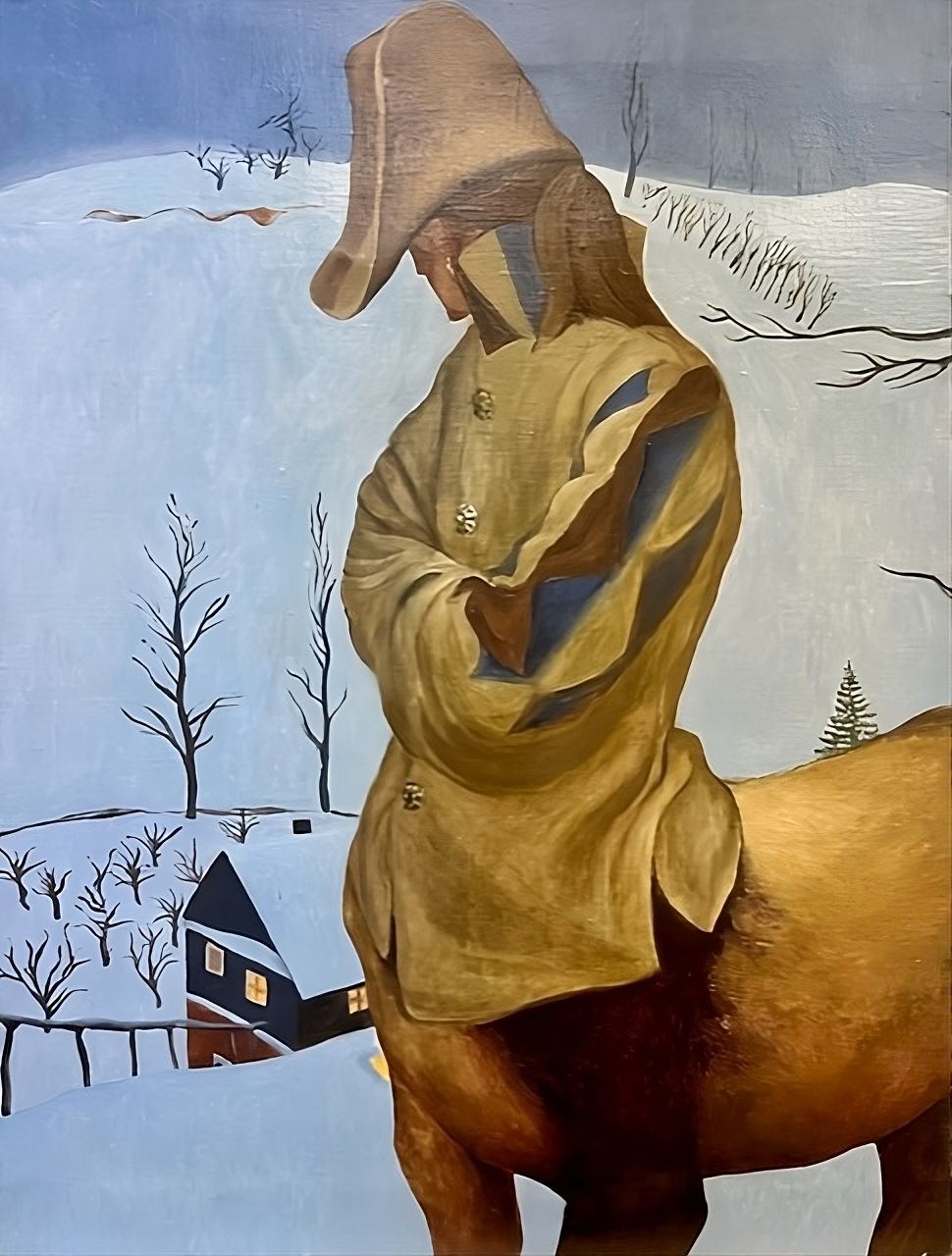

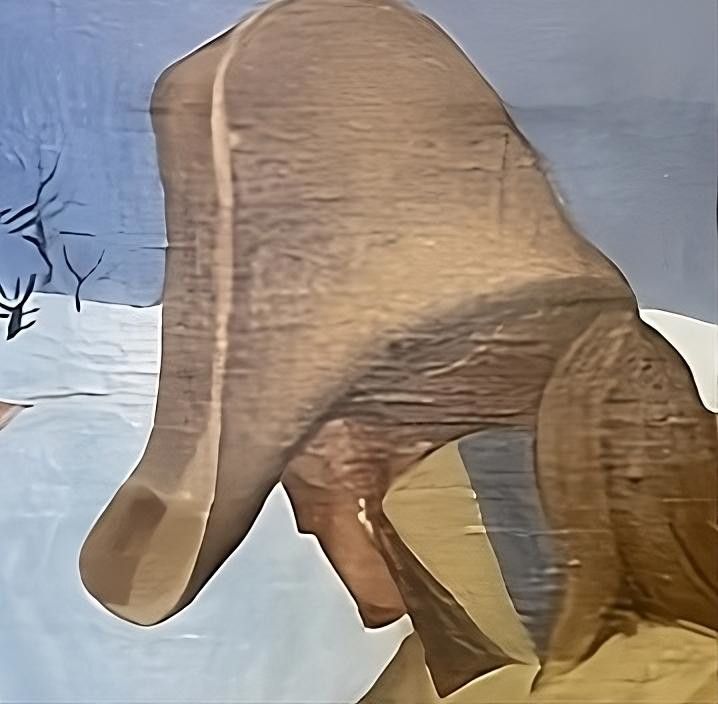
Я надолго завис и рассматривал. Прочитал название «Домик в овраге». Пока меня не подтолкнули продвигаться дальше. Ведь остальным тоже хотелось увидеть. По мере продвижения я знакомился с другими работами. Хотелось остановиться и подольше посмотреть, но не получалось.
Передо мной представали кентавры в разных образах. На каждой картине новый. Я думал, как, только кентавры и больше ничего другого? Они были очень разными. Где-то по-простому, закутанные в шерстяные и меховые одежды. А где-то яркие и броские. Или же совсем без ничего. Я приметил на многих работах уже знакомого «Наполеона» и подумалось, это история одного персонажа. А потом догадка подтвердилась, правда по отношению к другому персонажу. В названиях работ мелькало одно и тоже имя «Полкан».
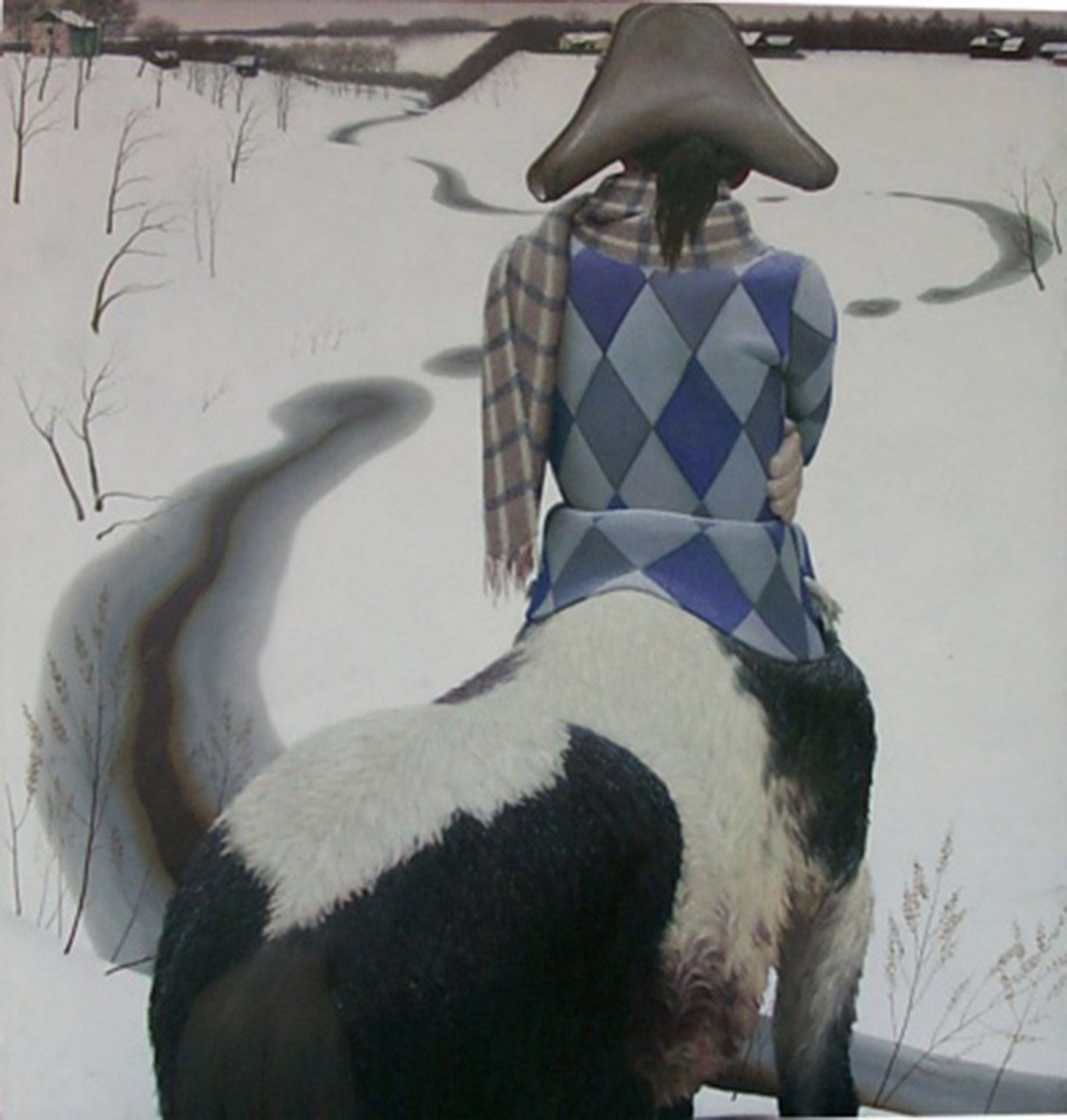

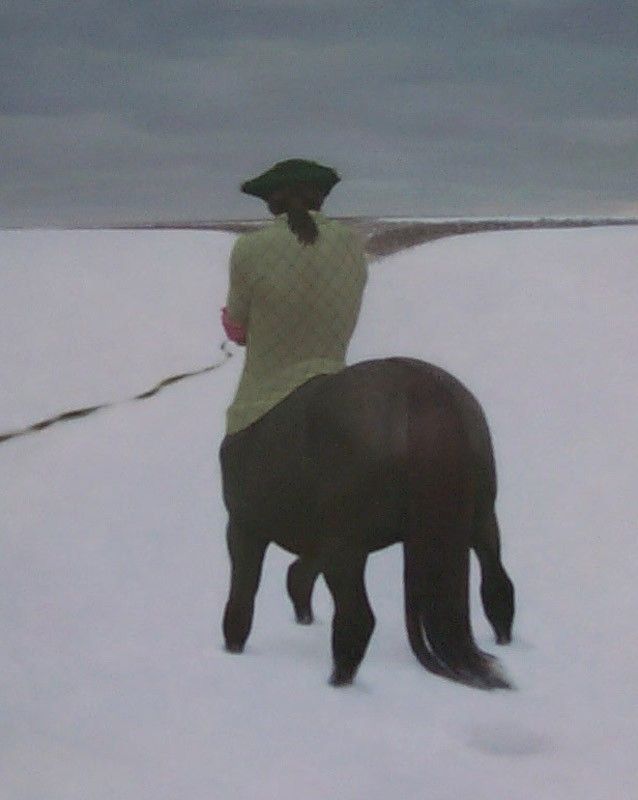



Меня поразили оттенки и цвета, которые выбрал Сергей Кухто. Тогда я не понимал что именно, а много лет после всё стало ясно. Автор подбирал тонкие соотношения мельчайших нюансов. Он ограничивал гамму, оставляя её в диапазоне, характерной для нашей природы. Никаких яркий открытых цветов, только разбавленные серым. Ведь у нас больше именно серой погоды, чем палящего солнца.


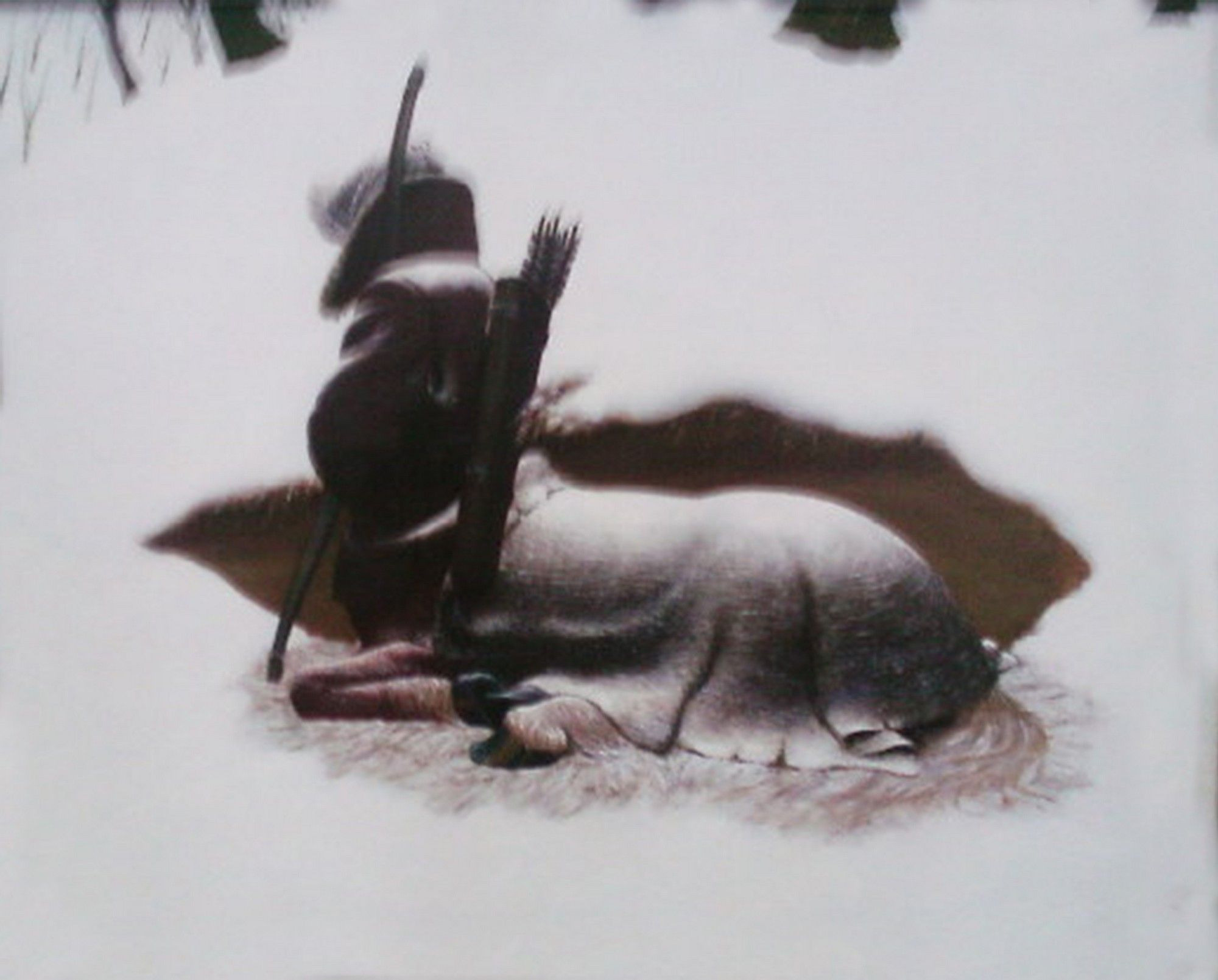
Меня покорили его простые сюжеты, где среди мне знакомых лесов и полей гуляют могучие кентавры и хрупкие девушки. Эта нейтральная атмосфера, идеально передающее настроение. Так любовно и трепетно выписана каждая мелочь, каждая волосинка, даже чистое пространство белого снега.
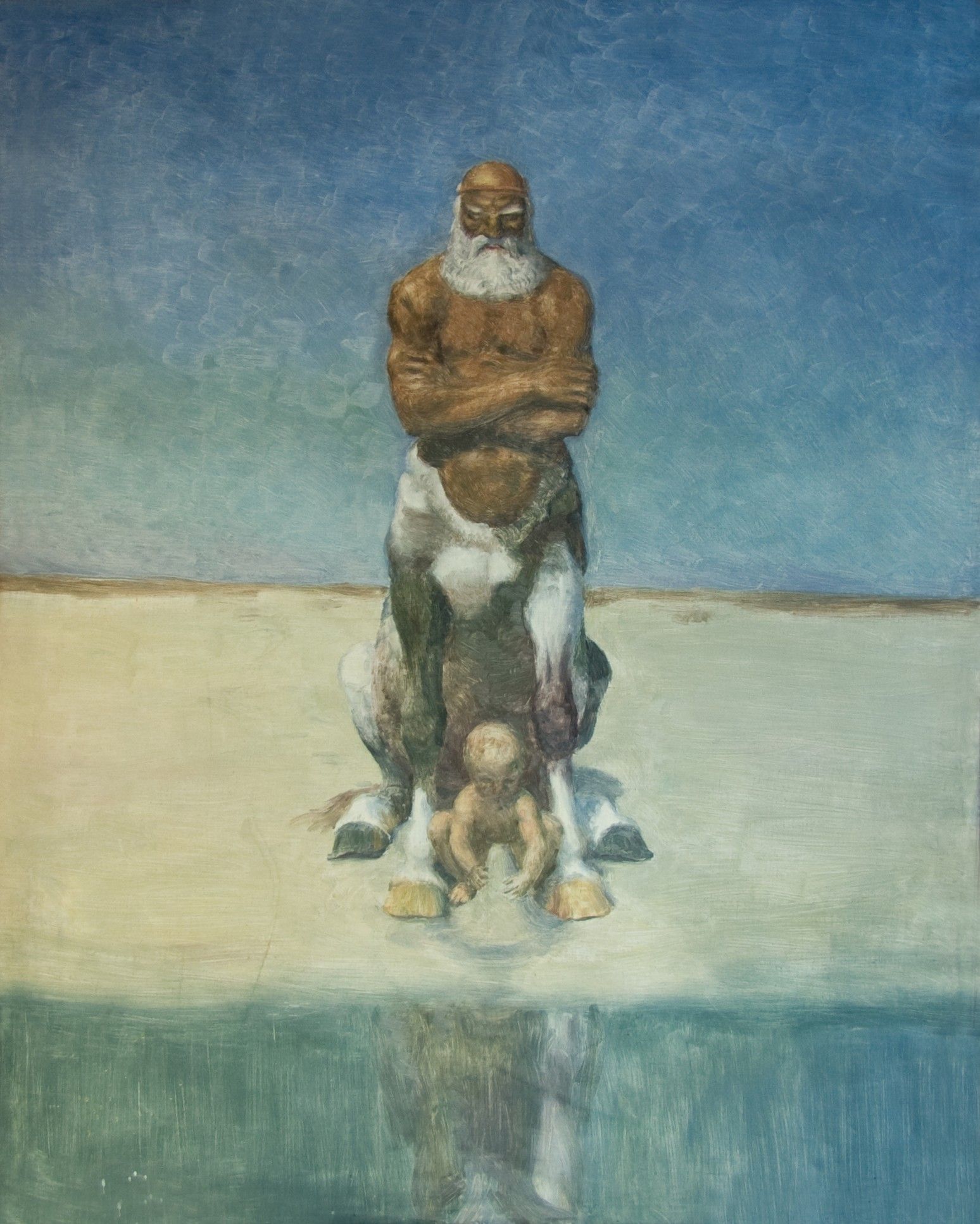
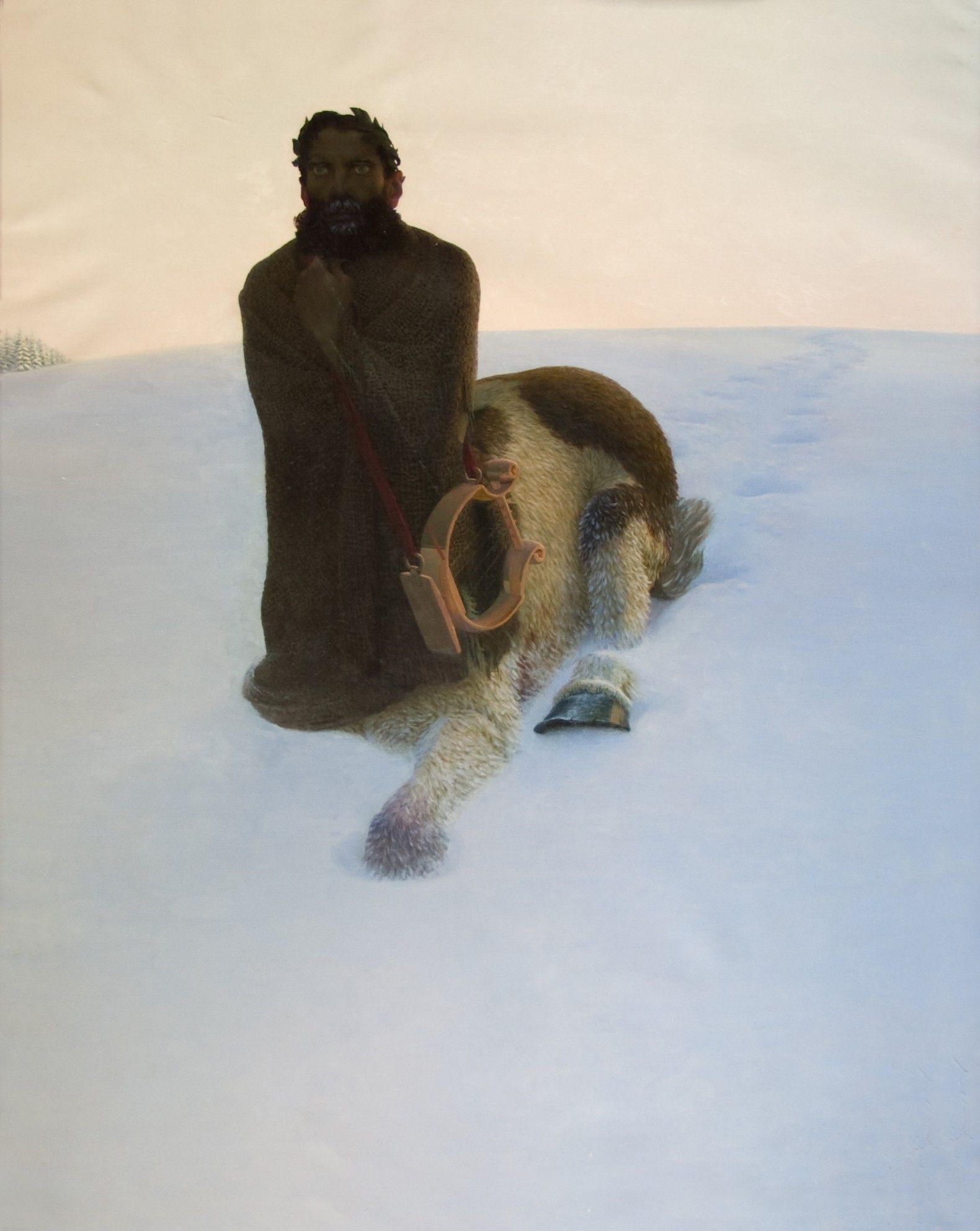

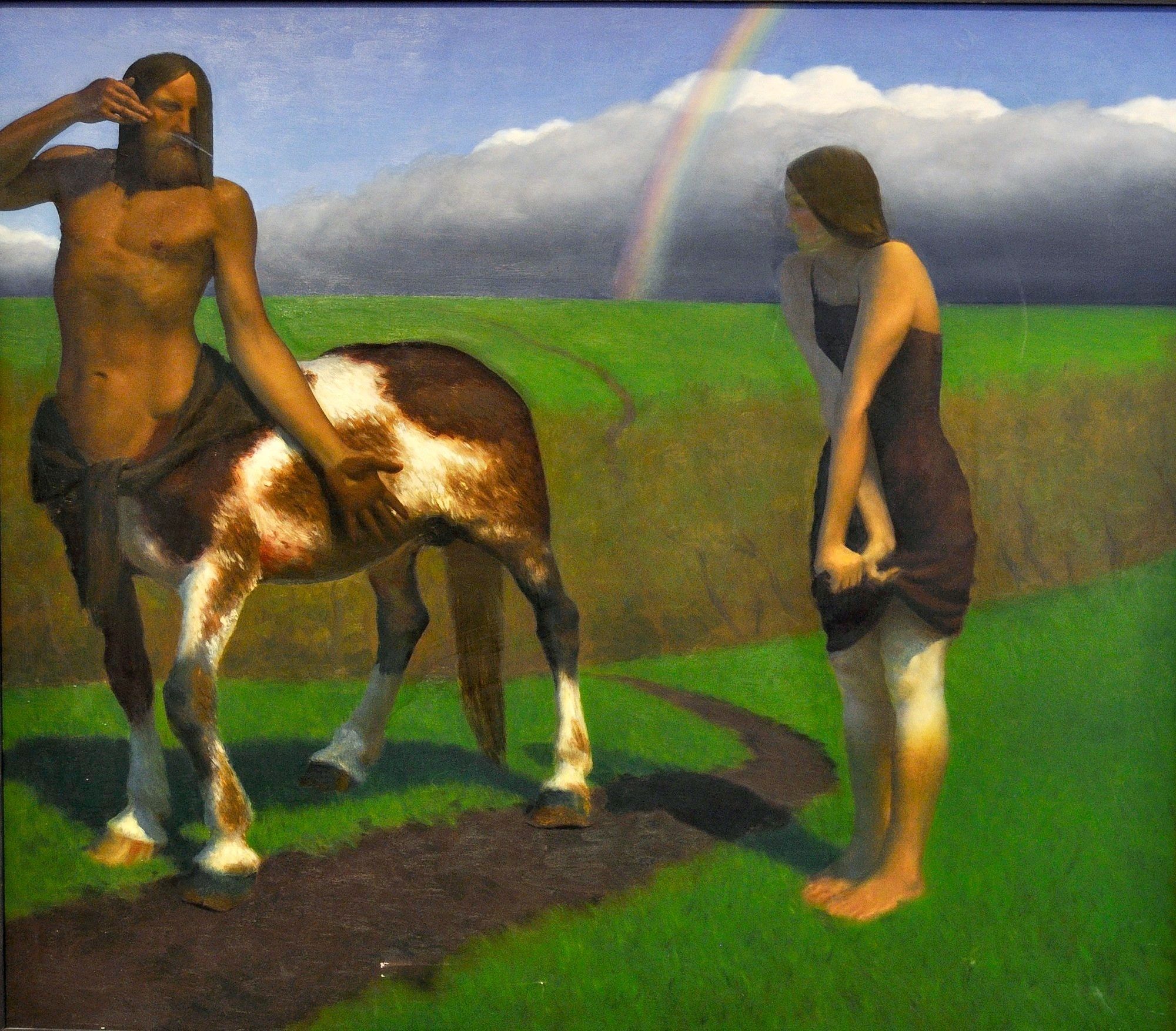
Мне казалось это чем-то невероятным. Разве возможно такое придумать и создать при помощи лишь одной кисточки? Я уходил с выставки поражённый и ещё долго задавался многочисленными вопросами. И, пожалуй, самый главный, когда я вновь смогу увидеть эти работы? Почему в Витебске до сих пор нет постоянной экспозиции? Почему о кентаврах, живущих среди нас, мало кто знает? Ведь их нужно показать всем, пусть так же подивятся и испытают море эмоций и впечатлений. Ведь ни одна фотография никогда не сможет передать все тончайшие нюансы масляной живописи.

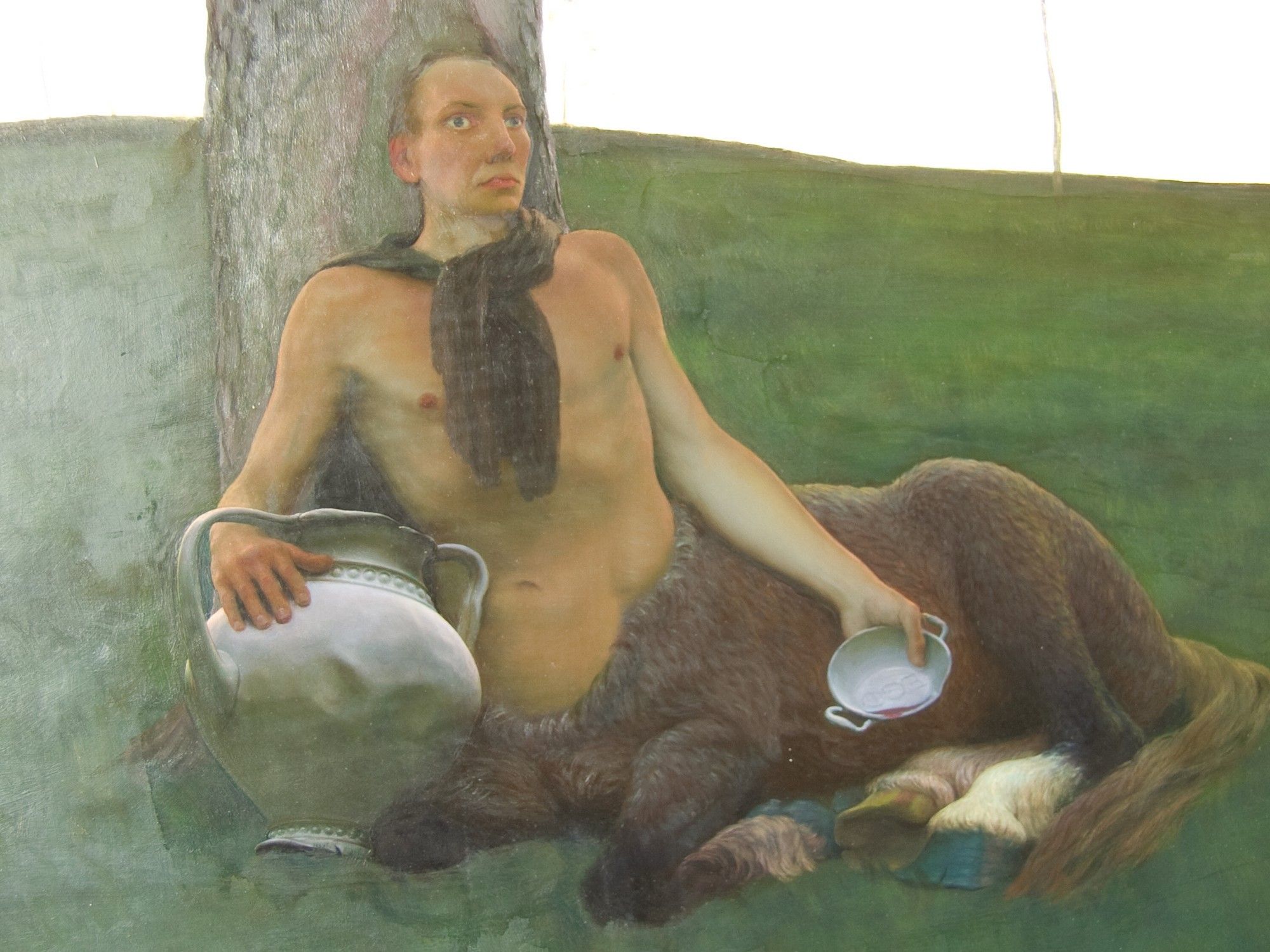


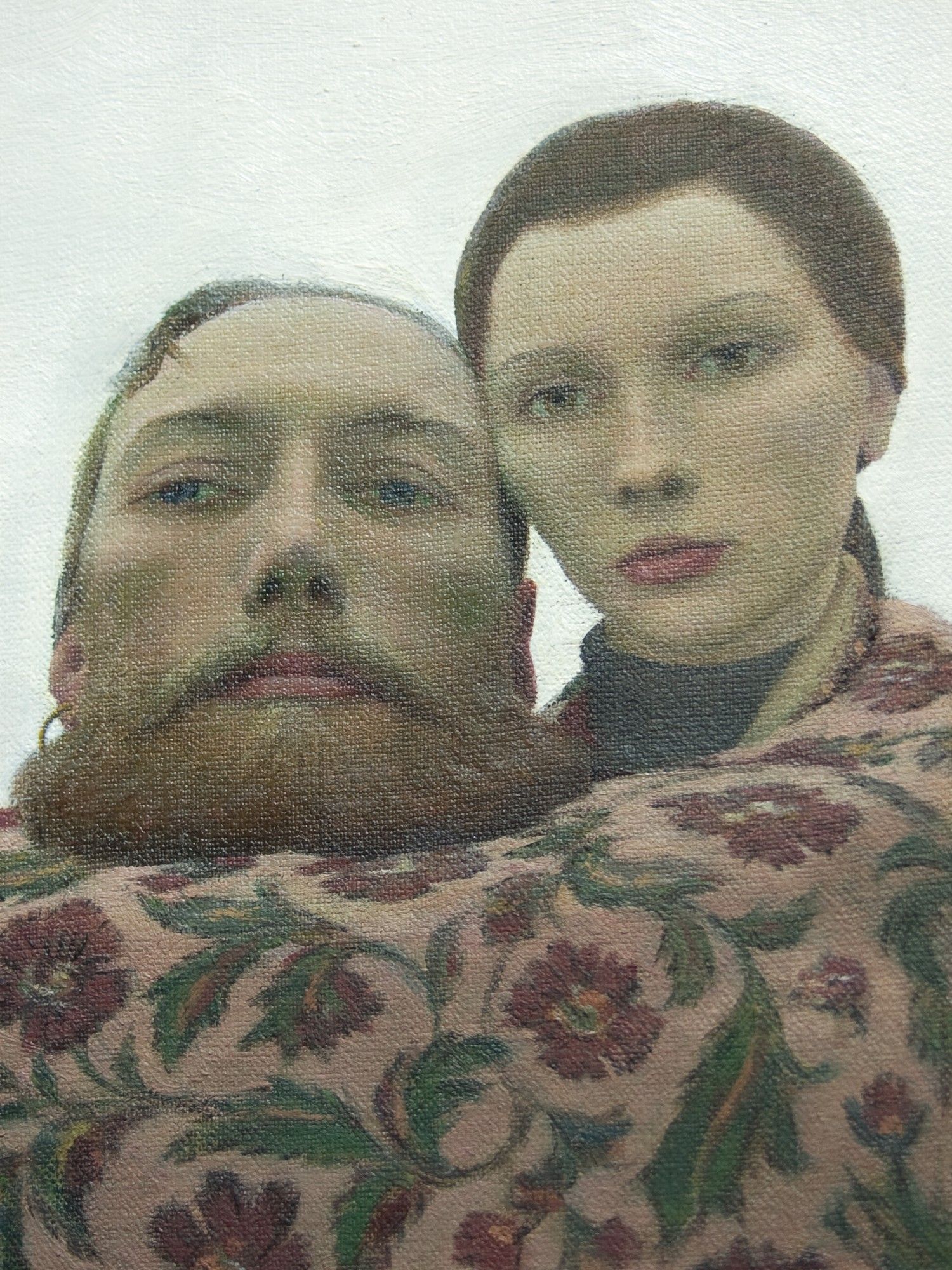
Сергей Кухто создал целый мир, где живут его кентавры. И туда очень хочется попасть…
Вернее будет сказать не создал, а отобразил. Ведь это наш мир, наши родные окрестности города Витебск. Там такие же знакомые с детства поля и леса, реки и озёра. И такая же холодная и белая зима, пробирающая до костей. Именно в этом и заключается вся прелесть работ Сергея. Там всё знакомо и близко для нас.
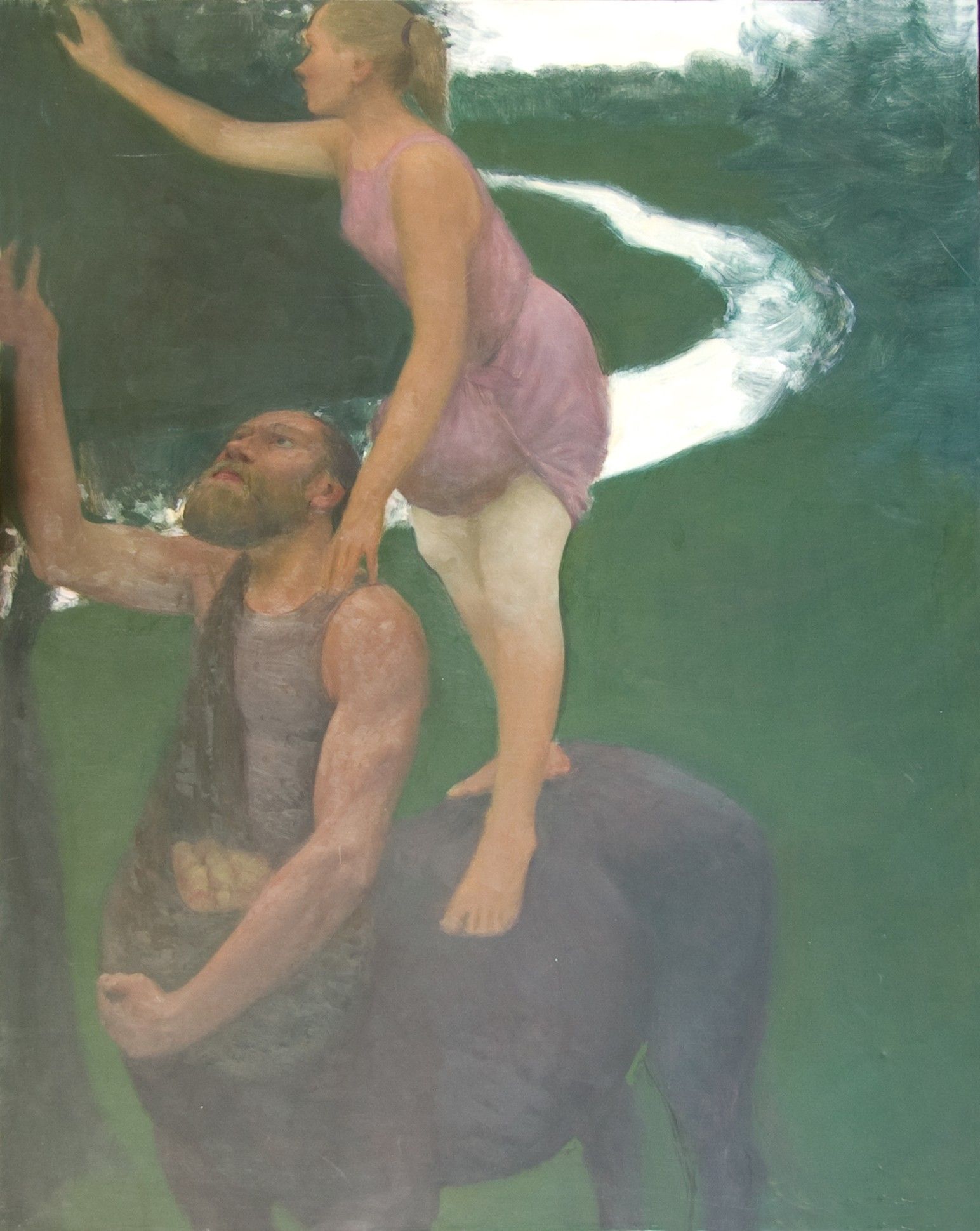
И в эти знакомые каждому места Кухто поместил своих кентавров. Они там живут, гуляют по полям и озёрам. Это кажется настолько реальным, что вот выглянешь в окно, а там идёт кентавр в старомодной одежде. И да, так не бывает. Но хочется, чтобы было. В этот миф очень хочется поверить. Ведь он такой тонкий, глубокий и успокаивающий. Он уносит нас от этой сумасшедшей реальности туда, где всё просто и понятно. И есть маленькая капля чуда. Именно поэтому зависаешь надолго у картин Сергея и просто смотришь, думая о чём-то своём.
Когда я смотрю на его работы я вижу отражение именно нашей, родной славянской души. Не смотря на причудливый вид главного героя, общее настроение до боли знакомое нам, жителям северной Беларуси. Всё серое, нейтральное, немного унылое. Смотришь на картины и сразу ощущаешь промозглую осень и колющий холод зимы. Когда ветер пробирает насквозь и снег хрустит под ногами. Когда от росы промокают насквозь ноги, а дождь капает за шиворот. И ты проклинаешь эту погоду. А за этим в памяти всплывает тепло дома и горячая кружка чая, согревающая тело и душу. По лицу расплывается улыбка, за окном холод и мороз, а ты согрет и тебе хорошо. Это очень тонкое чувство ощущения тепла и уюта при взгляде на снежную гладь и кутающуюся в пальто фигуру. Настроение покоя и единения.
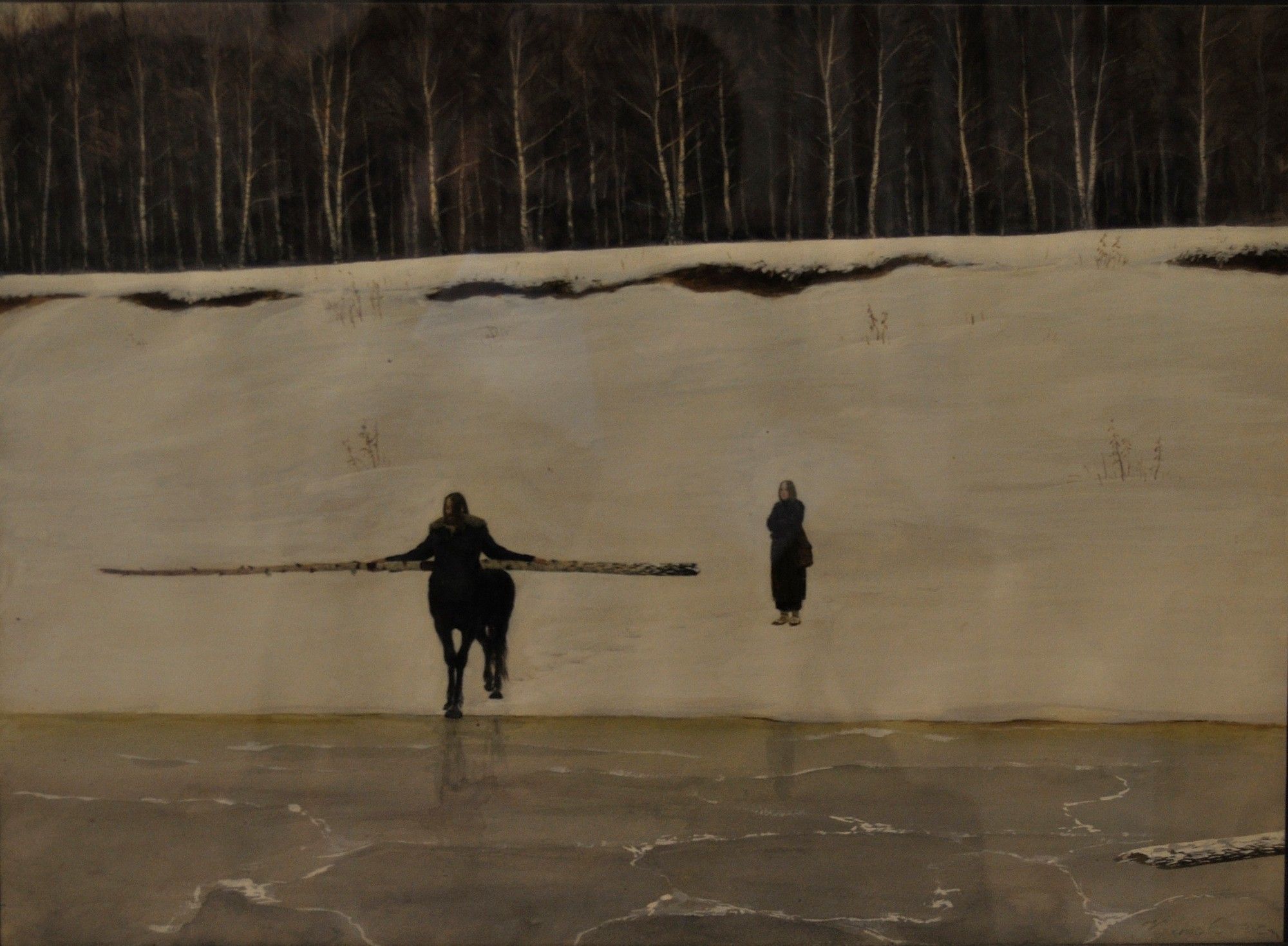

Однако, тонкое чувство природы и настроения это только часть того, что я вижу в картинах Кухто. Там есть ещё одна часть, очень большая и значимая. Сергей смог соединить наши славянские языческие верования с древнегреческими мифами. Он переплёл их в единое новое пространство. И теперь я более чем уверен, что в наших легендах были такие вот кентавры. Они когда-то гуляли по тропинкам за окном. Носили знакомое с детства пальто и шапку. И переживали всё тоже, что и наши предки. А иначе и быть не могло.

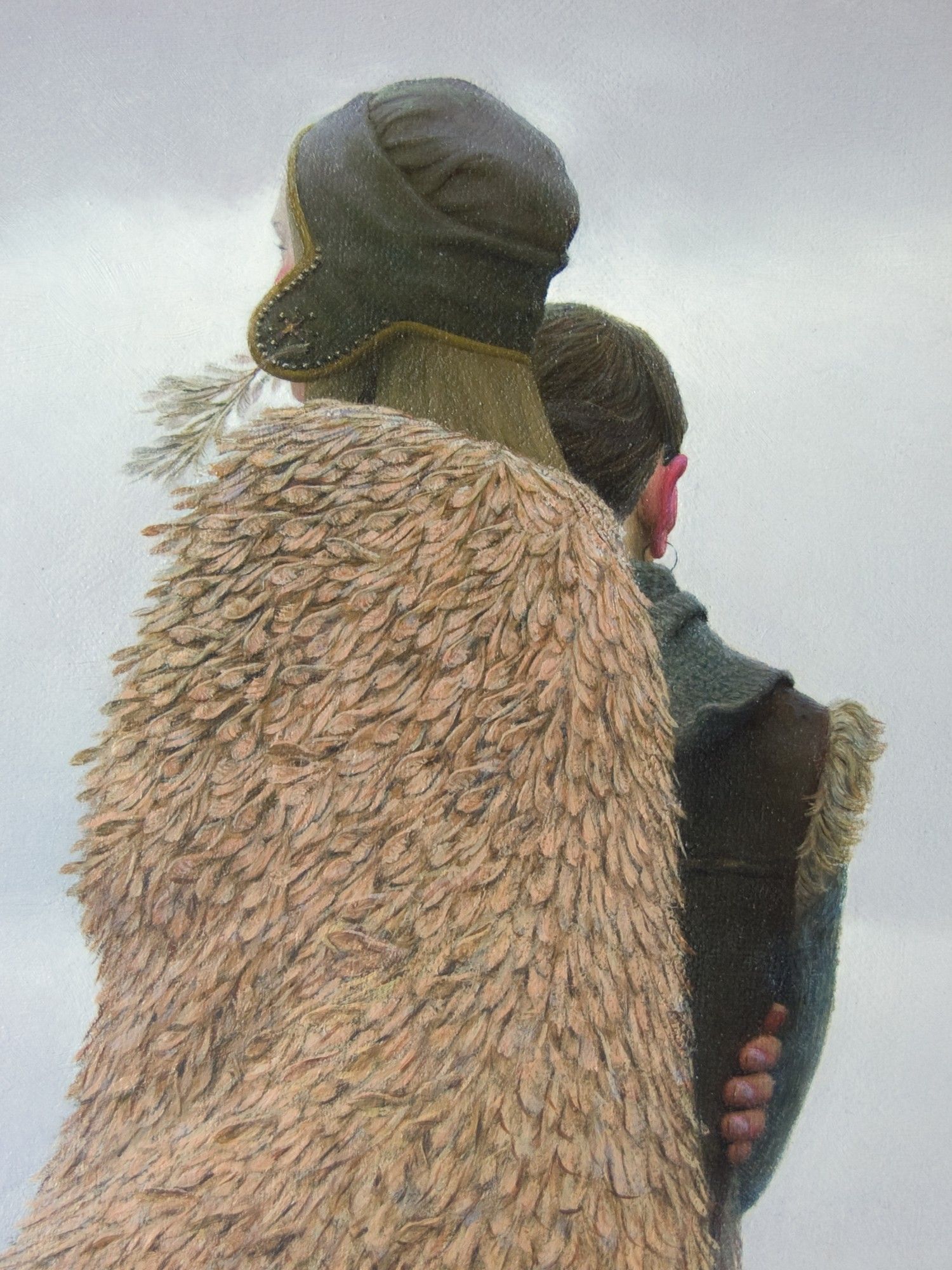
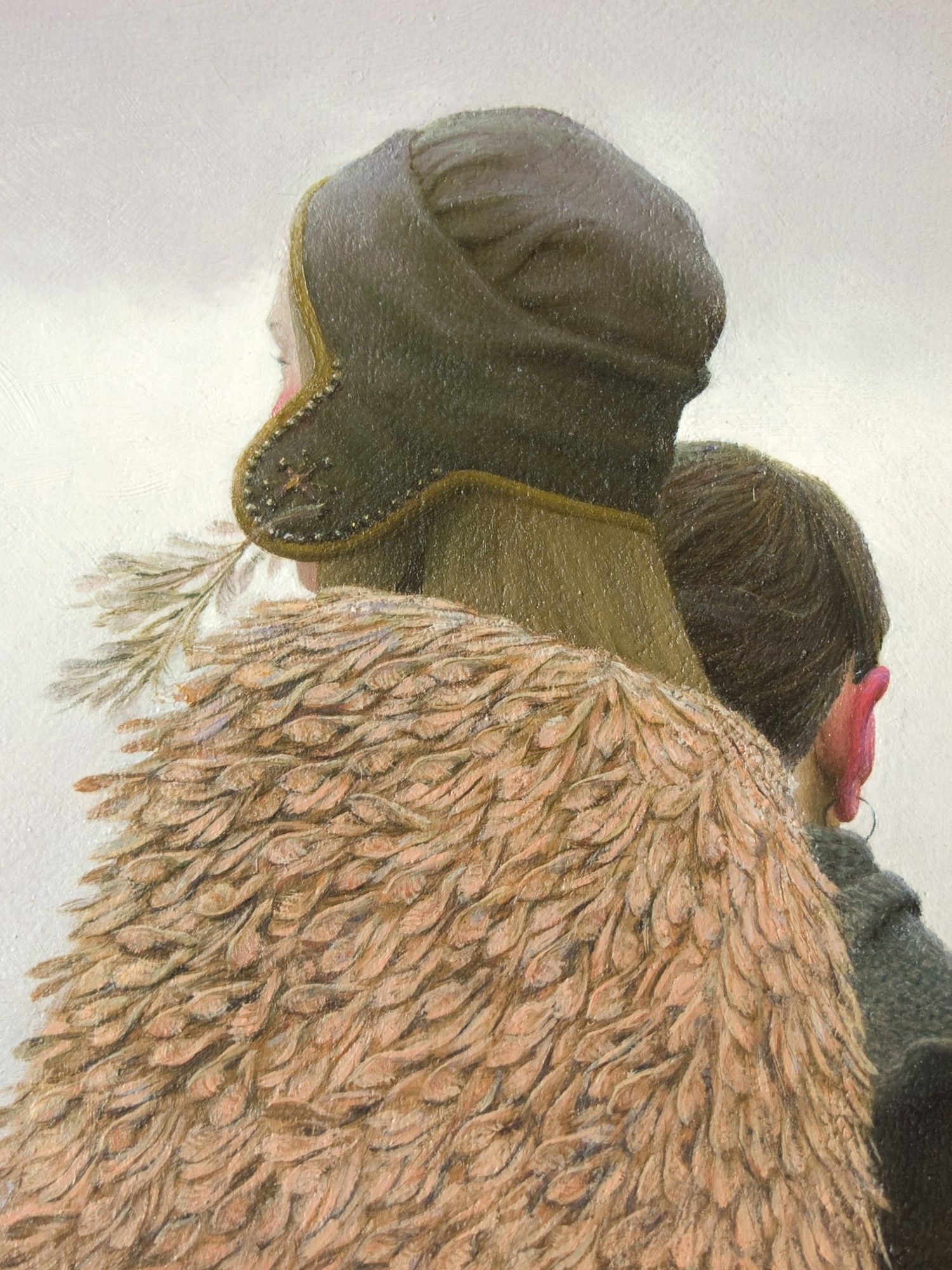
Сложно словами передать то, что чувствуешь. Это ощущения, которые возникают где-то в подсознании. Они из детства, из одиноких прогулок по лесам и паркам. Они из воспоминаний о любви и нежности. Где только ты и она, вдвоём посреди непогоды.


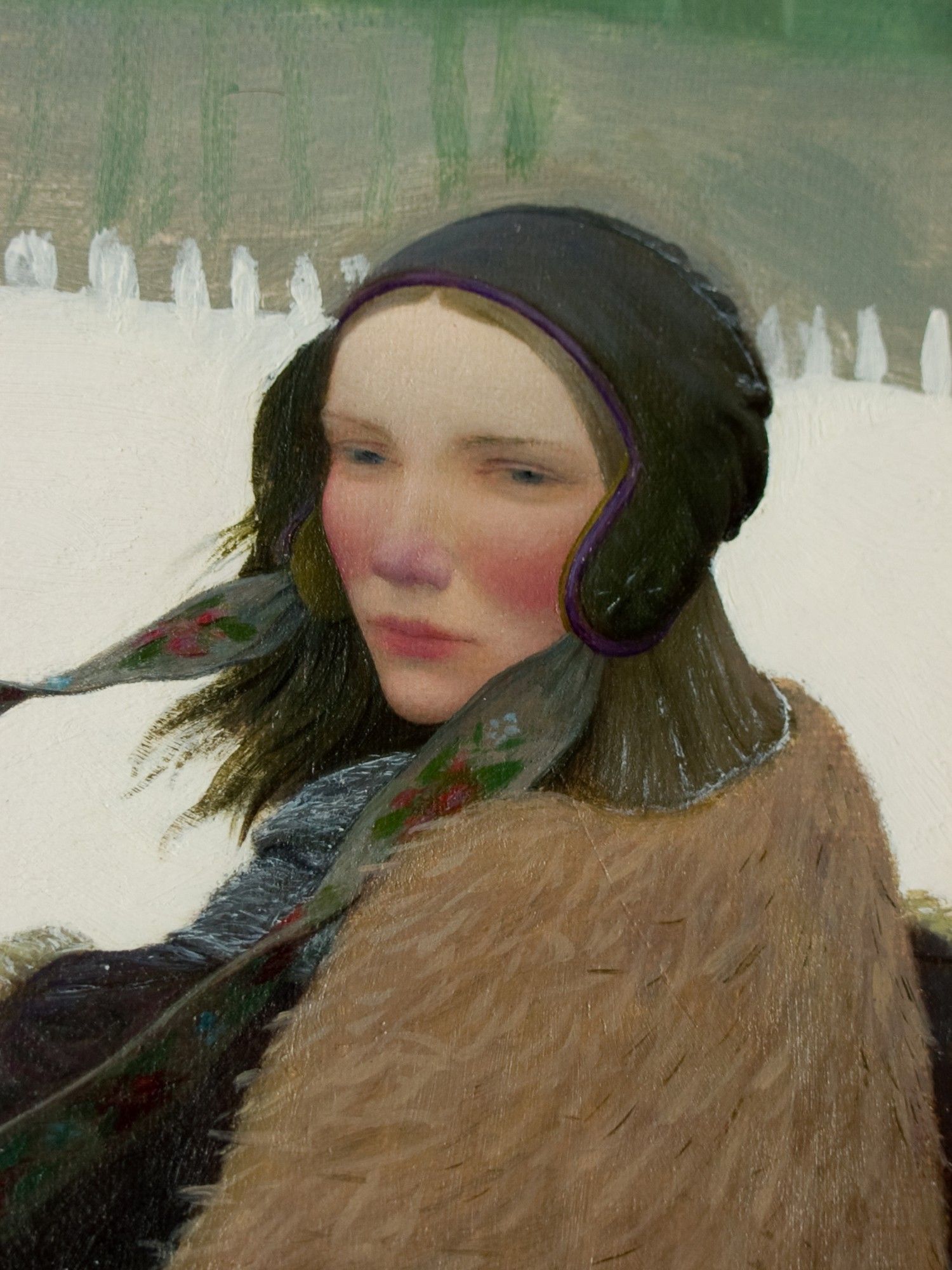
И если читать многочисленные воспоминания жены Сергея, то можно узнать, что именно такими прогулками и вдохновлялся автор. Он много гулял. Как один, так и со своей супругой. Он впитывал всё что видел, а затем передавал свои ощущения и воспоминания на холстах. Пропитывая сюжеты своими эмоциями и образами. Довольно часто в качестве модели он использовал себя. Поэтому мы видим довольно мощную угловатую мужскую фигуру. У него в мастерской было пара зеркал, где он мог смотреть на себя со спины. А в некоторых спутницах угадываются черты его супруги. В последующем же, на картинах появляются образы его детей.
Вообще, для каждой картины Сергей подолгу искал модель под конкретный, задуманный им образ. А когда находил, уговаривал человека попозировать. Чаще всего позировали для фотографии. Ведь работа над картиной велась очень долго. А необходимое настроение модели и состояние природы уходят мгновенно. Потому все сюжеты так хорошо и тонко собраны, проработаны и выглядят действительно по-настоящему.
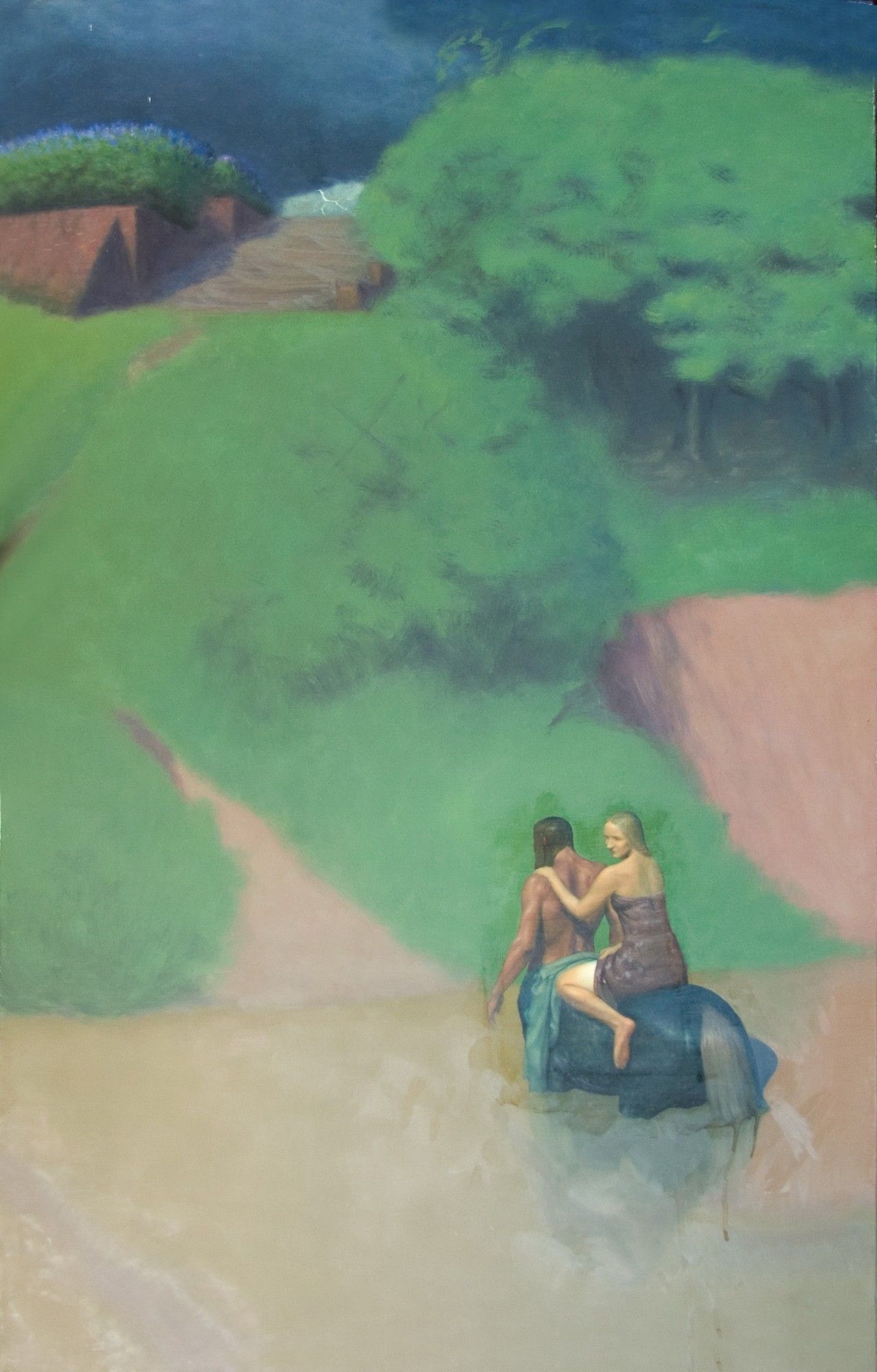
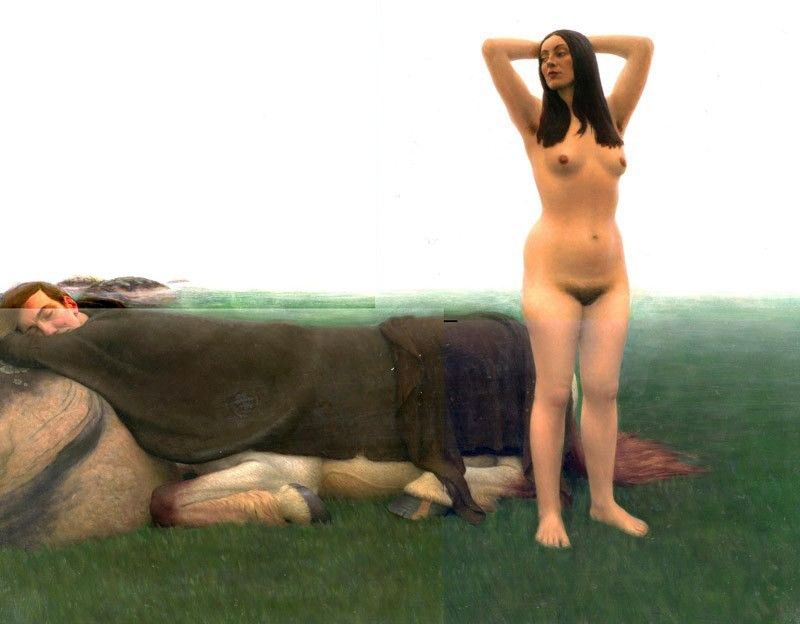
В своих картинах Сергей Кухто показывает себя частью мира, отражая окружающую его природу в своеобразном зеркале художника. И преобразует в новый авторский миф. Именно миф. Ведь что такое мифы по сути? Это проецирование нашей жизни: рождение и смерть, любовь и ненависть. И всё это можно увидеть в самых разных сюжетах, которые Сергей отражает в своих работах. Он старается передать основную идею мифа через хорошо найденные образы. Это помогает нам воспринимать по-новому уже известный мифологический сюжет.
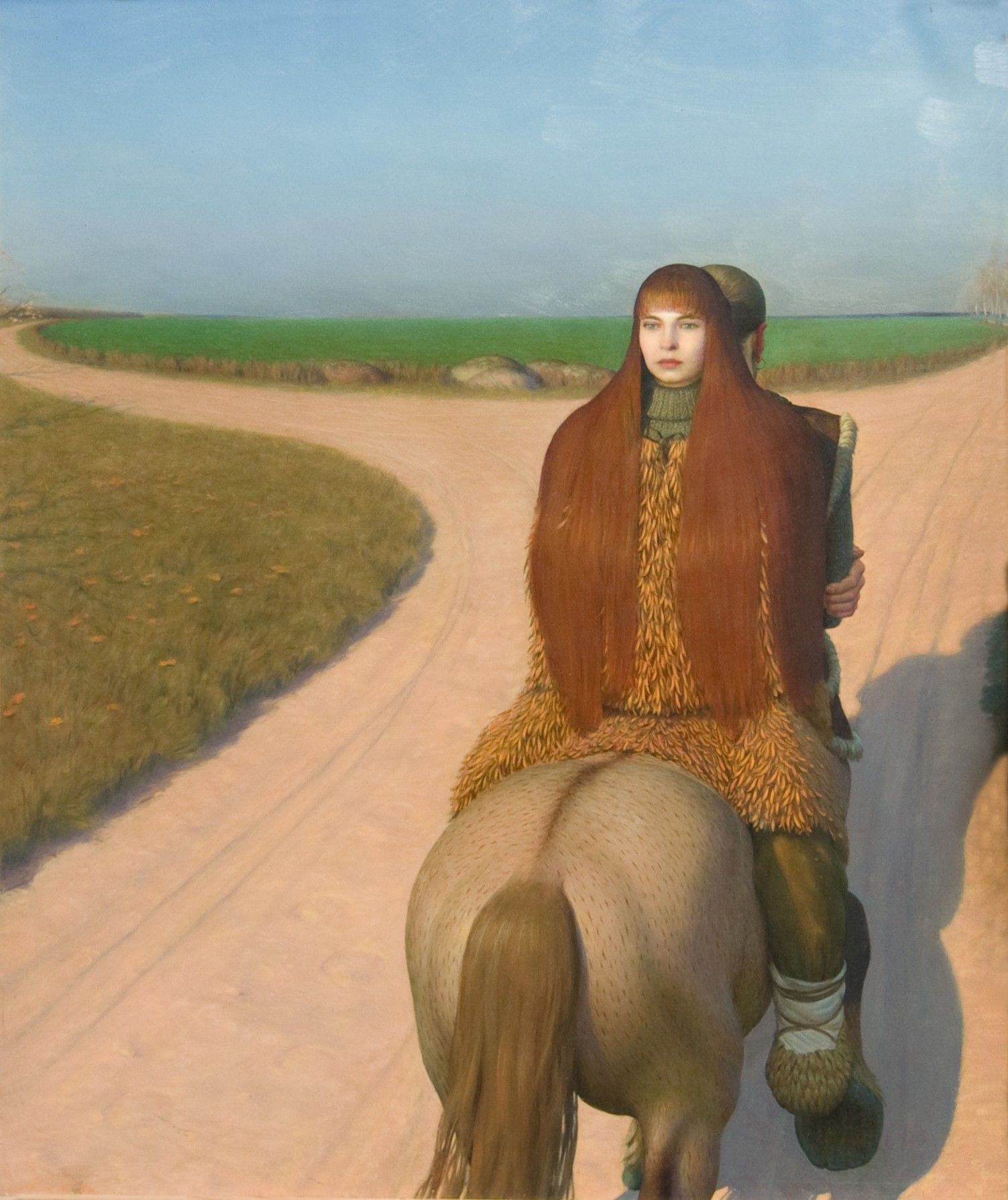
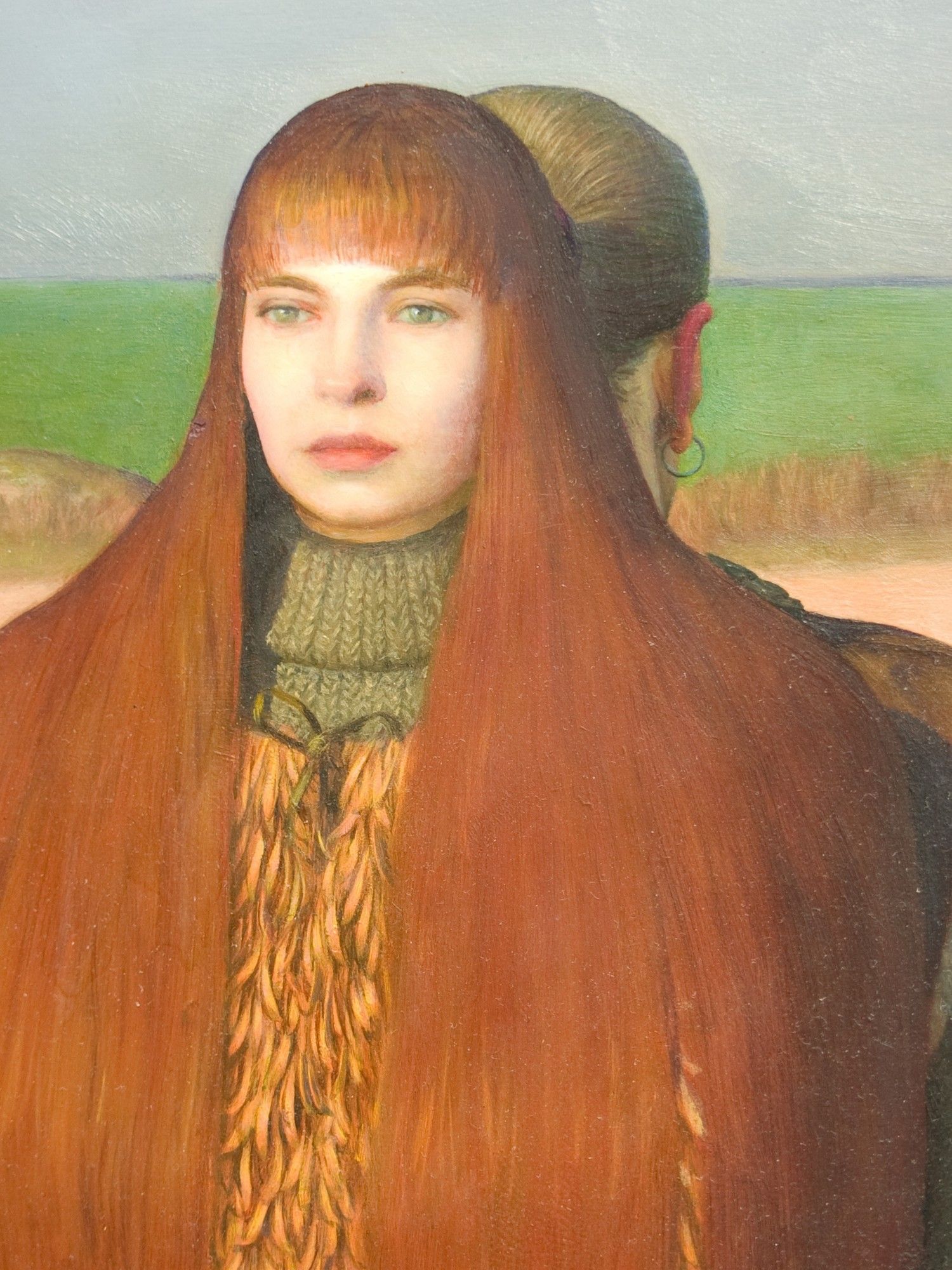
Всё это очень тонко переплетается и создаёт свою особенную неповторимую атмосферу. Подобно которой я нигде больше не встречал. И это не удивительно. Ведь такие чувства и ощущения возникают, когда я рассматриваю работы именно Сергея Кухто. Они отзываются в глубине души теплотой и болью. Возможно, подобные ассоциации возникают только у меня. Но не думаю что это так. Уверен, что-то схожее всплывает сейчас и у вас, при взгляде на картины Кухто. Потому задержитесь ещё немного и посмотрите на эти репродукции, чтобы проникнуться поглубже.
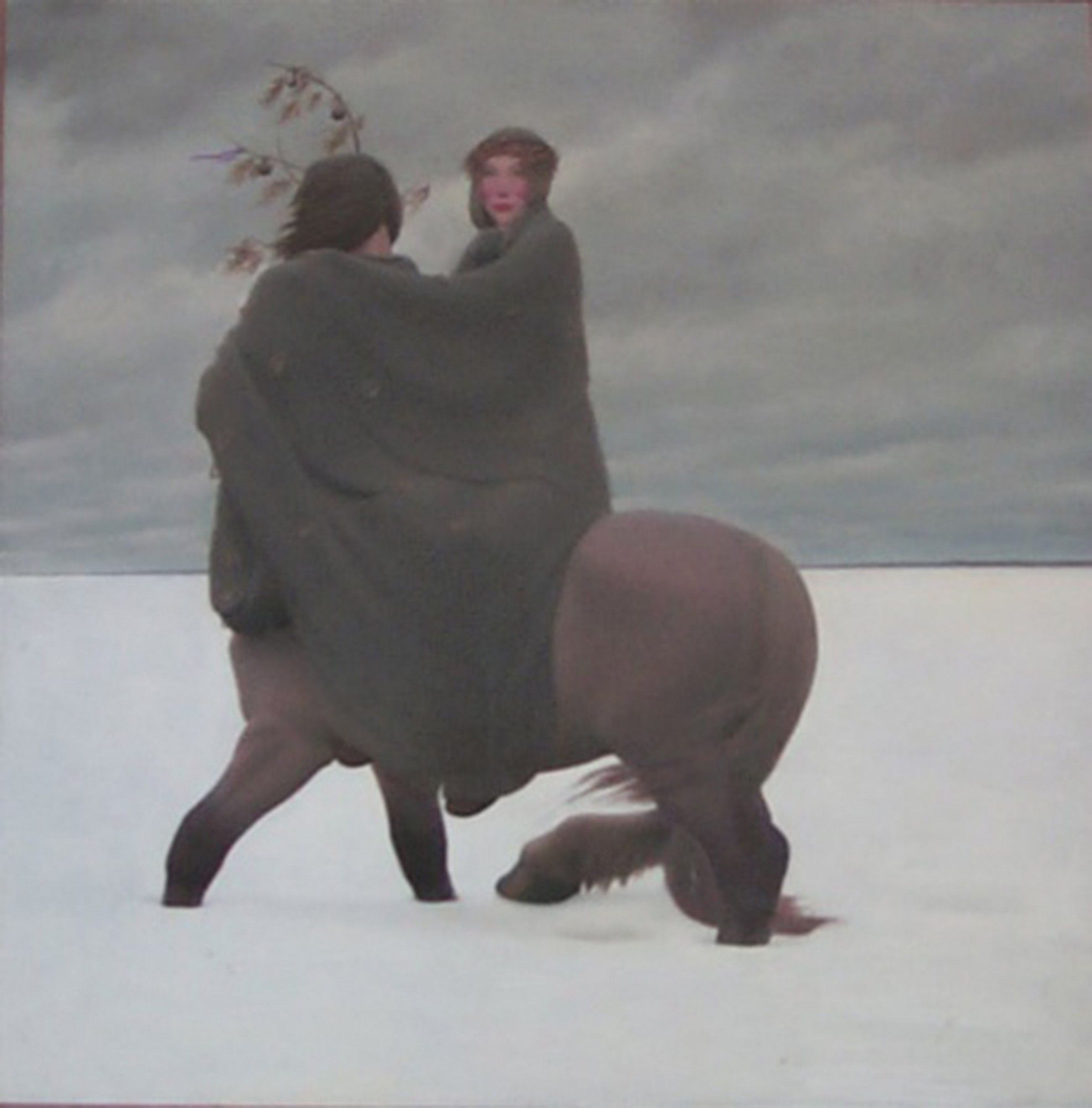

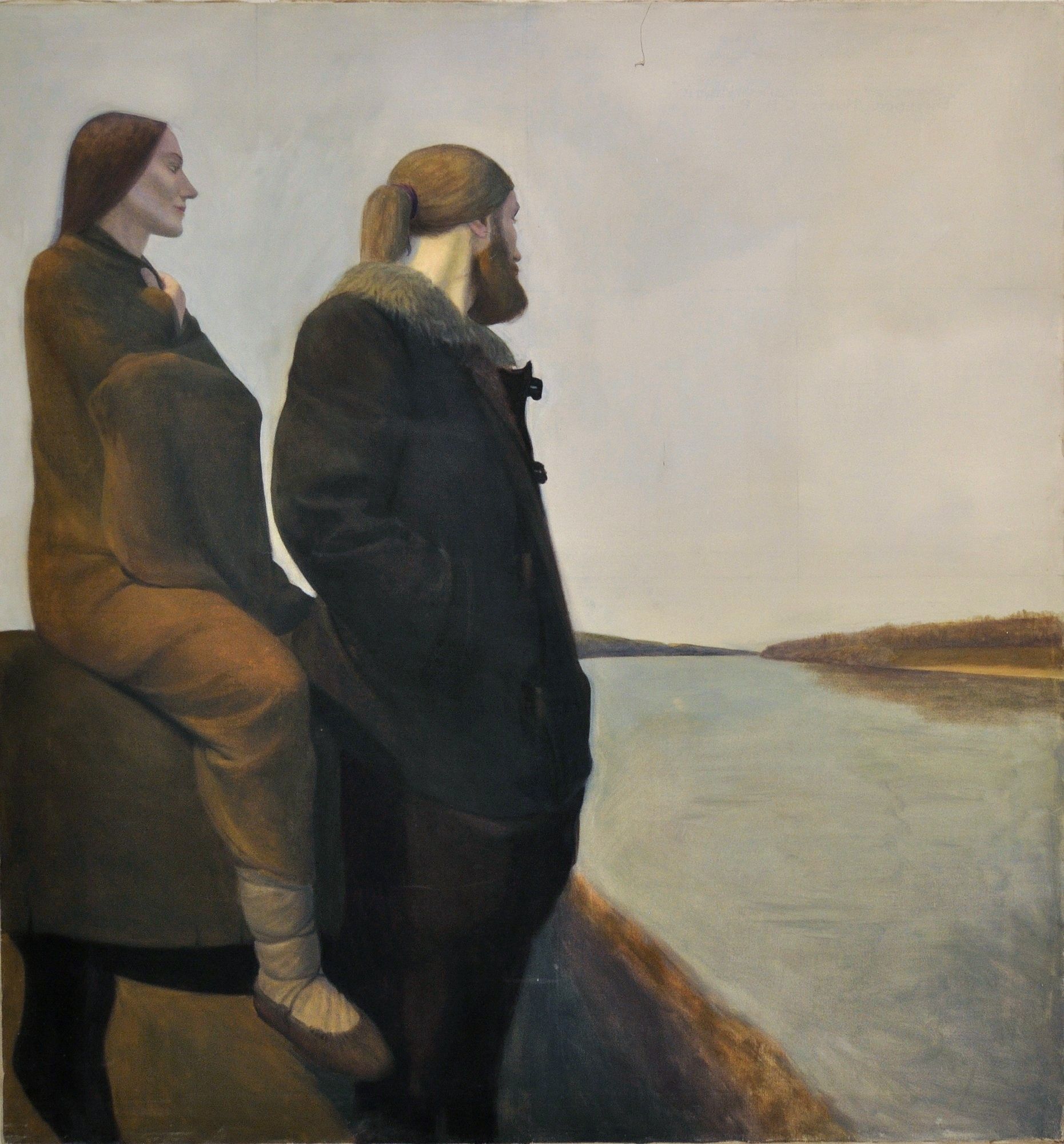


И только со временем я узнал больше о Сергее Кухто, намного больше.
Я узнал о его творчестве. О том, как он создавал этот удивительный и тонкий мир, где живёт тот самый загадочный кентавр Полкан. Я узнал, что это не просто фантазия. Это намного больше. Это отражение всего того, что видел и чем жил автор. Это перенос его эмоций, чувств и переживаний. Я узнал, что настоящее творчество может быть только таким и никаким другим. Ведь нельзя обманывать себя. Невозможно спрятать свои мысли и сделать что-то особенное, что затронет струны души зрителя. Только вывернув себя всего полностью на холст, только пережив это, только прочувствовав, влюбившись и возненавидев можно передать что-то настоящее. Только так. И именно этим путём и шёл Сергей Кухто. Именно так он творил. Он был искренен и открыт.
Так же со временем мне посчастливилось выяснить некоторые нюансы из техники живописи этого художника. Я узнал о том, что он писал слоями в классической манере. О том, что даже самые тонкие кисти он прореживал до пары волосков. Чтобы не было видно мазков. И чтобы можно было прописать каждый волос, каждую шерстинку на кентавре. Я узнал, что он намеренно создавал кинематографичные композиции, выстраивая сюжет по принципам киношников. Таким образом создаётся ощущение частички большой истории, кадра из кино, которое мы можем посмотреть.



Я узнал, что Сергей мог работать только с натуры. Он много ходил по окрестностям Витебска, чтобы найти нужный сюжету вид. Он мог искать по всему городу среди знакомых, например, старинное зеркало или лиру. Даже одежду специально для сюжета создавал. Шился свитер с ромбами, накидка с листочками. Это такие маленькие нюансы, которые очень точно дополняют образ художника и степень его отношения к работе.



Я узнал, что художник работал годами, по 5-6 лет, над каждой картиной и всё равно был не доволен результатом. Он всё равно считал картины не законченными. И зачастую из-за этого не стремился их показывать общественности. Я узнал, что неудовлетворённость результатом заставляла Сергея уничтожать созданные им полотна. Он их просто смывал в ванной. Поэтому сохранились картины только после 1991 года. Это звучит жутко. Кажется, как так можно? Однако со временем я понял, что да, такое возможно. И очень даже легко. Сколько раз я сам еле удерживался, чтобы не уничтожить всё, что было сделано мной раньше…



Со временем я также узнал и о жизни художника. Как он учился, чем жил и о чём мечтал. Я познакомился с его семьёй, с супругой и дочерью. С его сыном, к сожалению, так и не довелось повстречаться. А с дочерью художника мне вообще посчастливилось учиться на соседних курсах. Личное знакомство с родственниками очень сильно помогло понять Сергея Кухто. Не думаю, что я смог бы настолько глубоко проникнуться его картинами без этого.
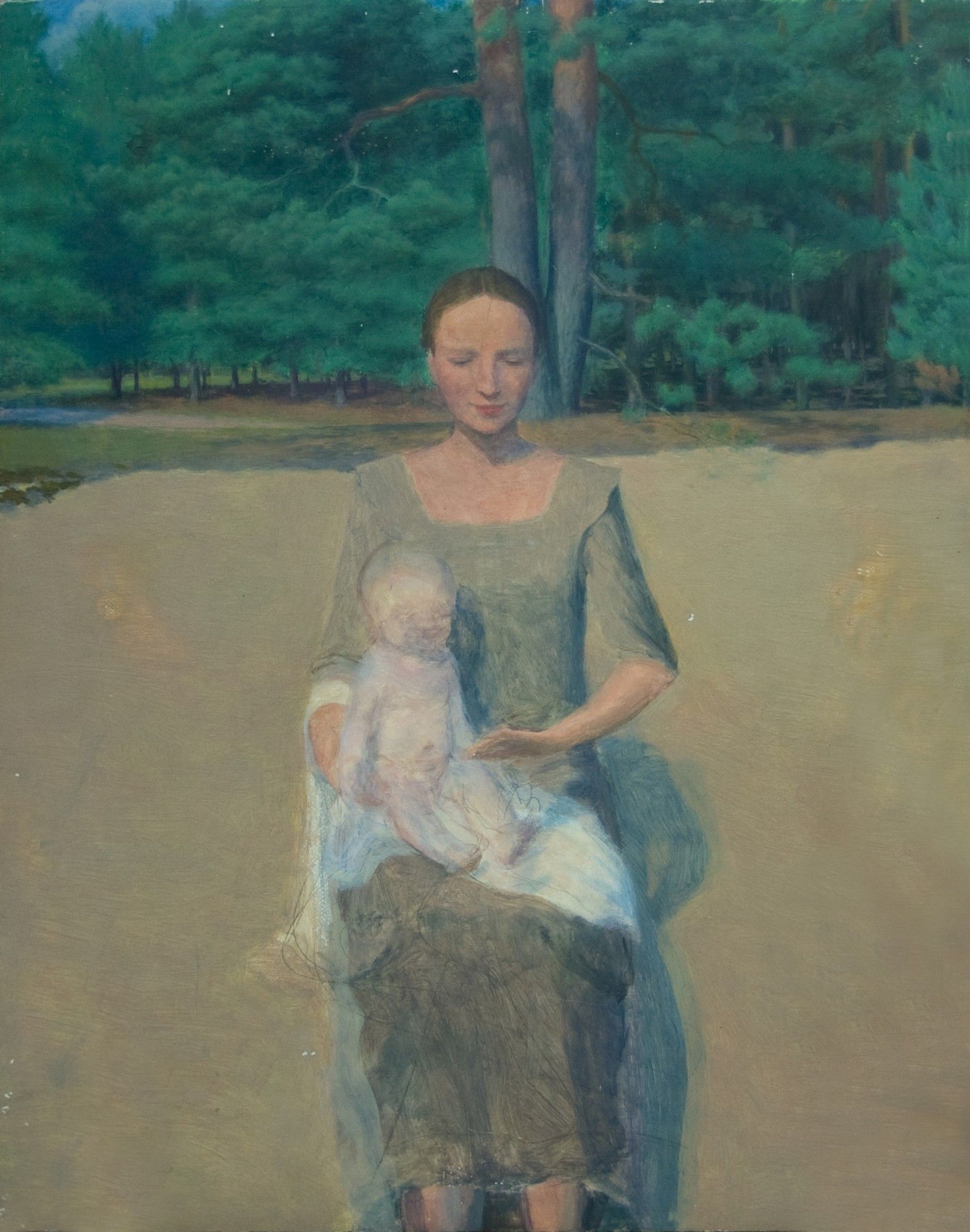
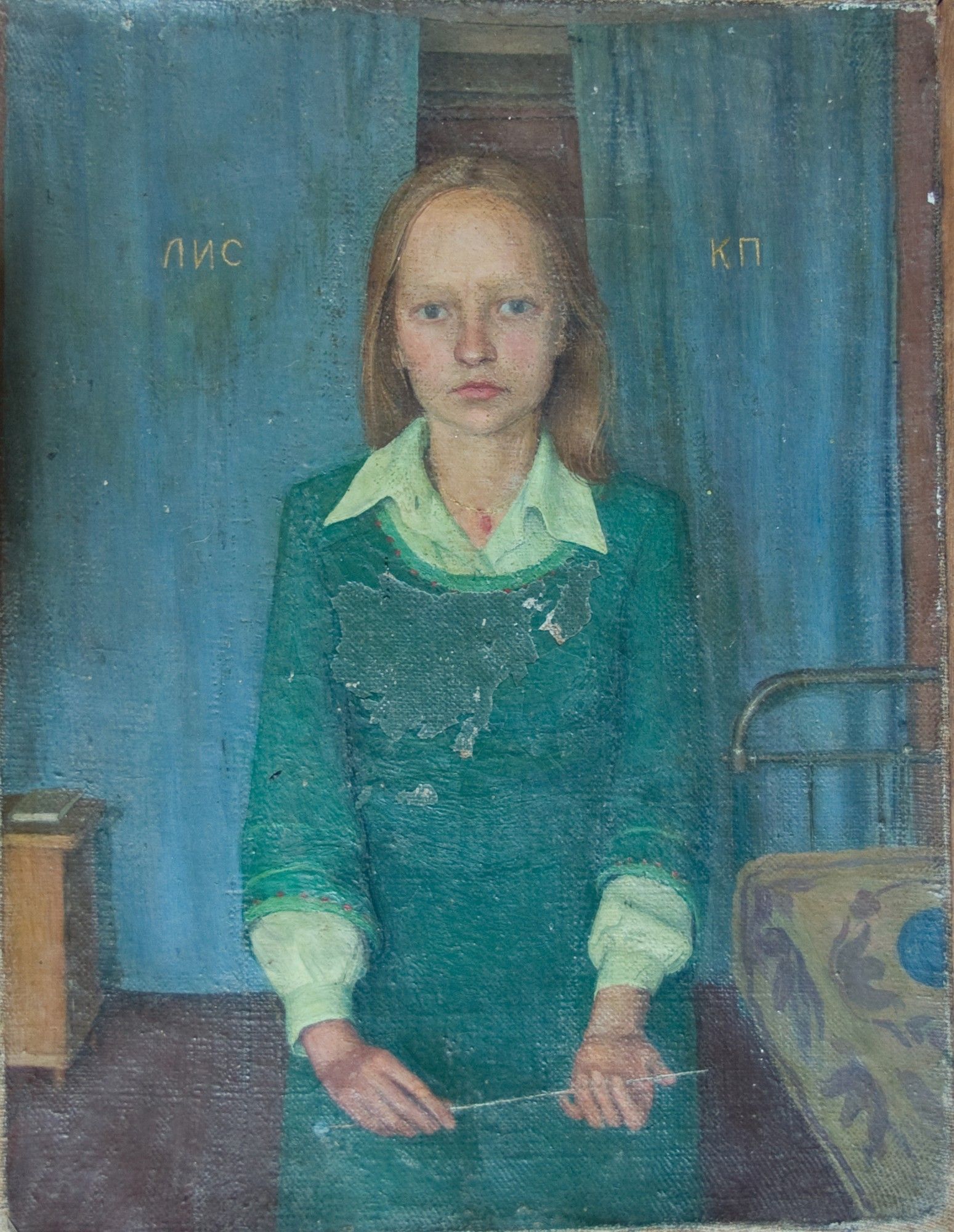

Так же я узнал что это был довольно большой и рослый человек с сильными руками. Он много работал с топором, косой и резцами по дереву. Потому для него держать тонкие кисти и выписывать мелкие детали было не так-то просто. К тому же он повредил зрение во время резьбы по дереву. Что довольно осложнило его творческую жизнь.

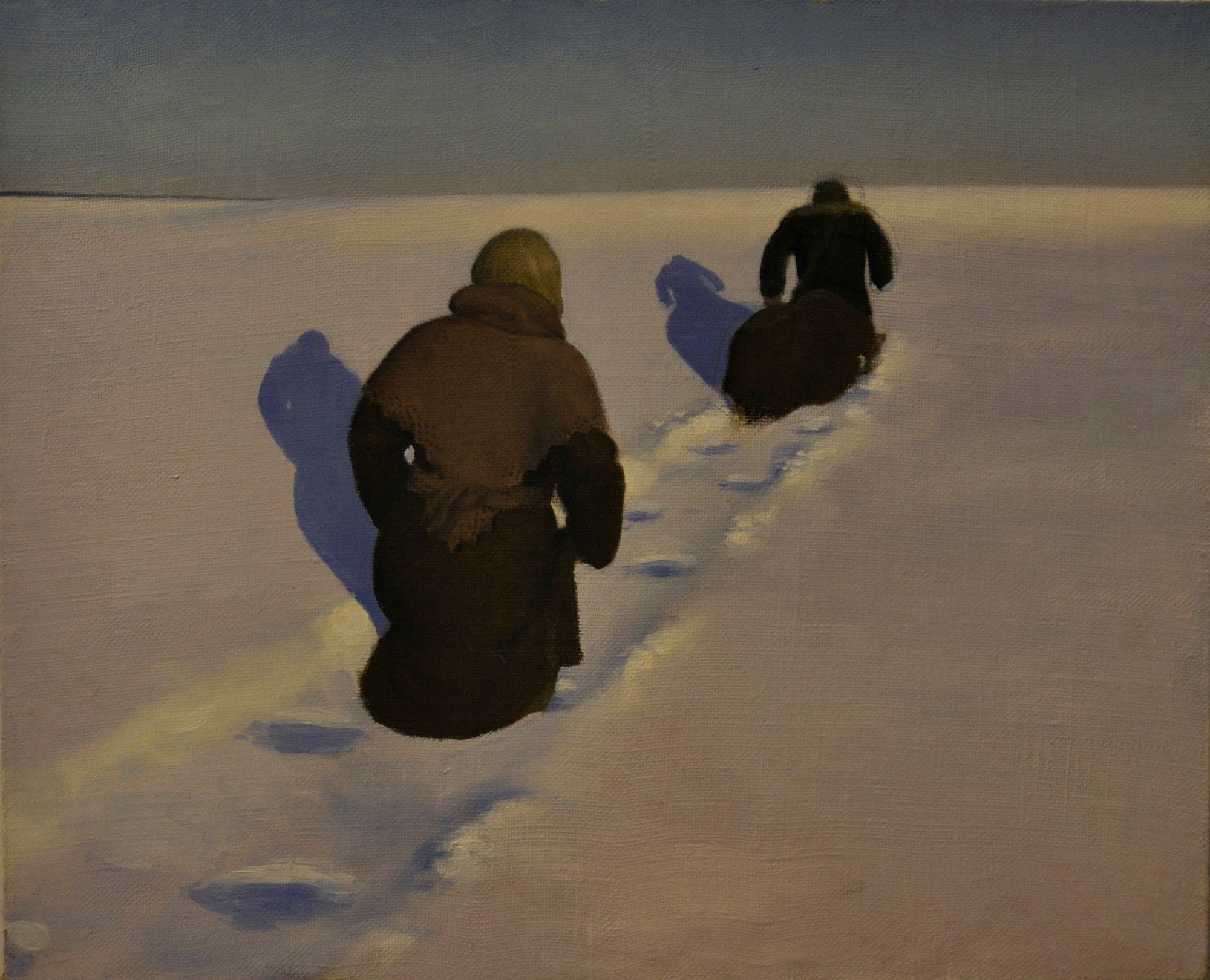
А ещё я узнал о его психологическом настроении и сложном взаимоотношении с другими художниками, с официальным союзом художников и выставочными залами. Ведь это очень сложно продолжать творить, когда тебе прямо говорят, что ты не художник. Можно только представить насколько тяжело было автору выдержать внешнее психологическое давление. Однако при этом он продолжал работать. В 90-е годы Сергей своим творчеством, картинами и резьбой по дереву, зарабатывал на свою жизнь и жизнь семьи, на содержание мастерской. До выставок же картины просто не успевали добираться. Однако, в один трагичный момент, Сергей Кухто решил поставить резкую точку в своей биографии. Причины можно искать и находить, но стоит ли? У всех художников всегда не простая судьба…
Очень многое я узнал из заметок, статей и воспоминаний. Пожалуй, это самый большой и полный источник, доступный для всех. Кто желает лучше понять творчество Сергея Кухто, очень рекомендую полистать его сайт.
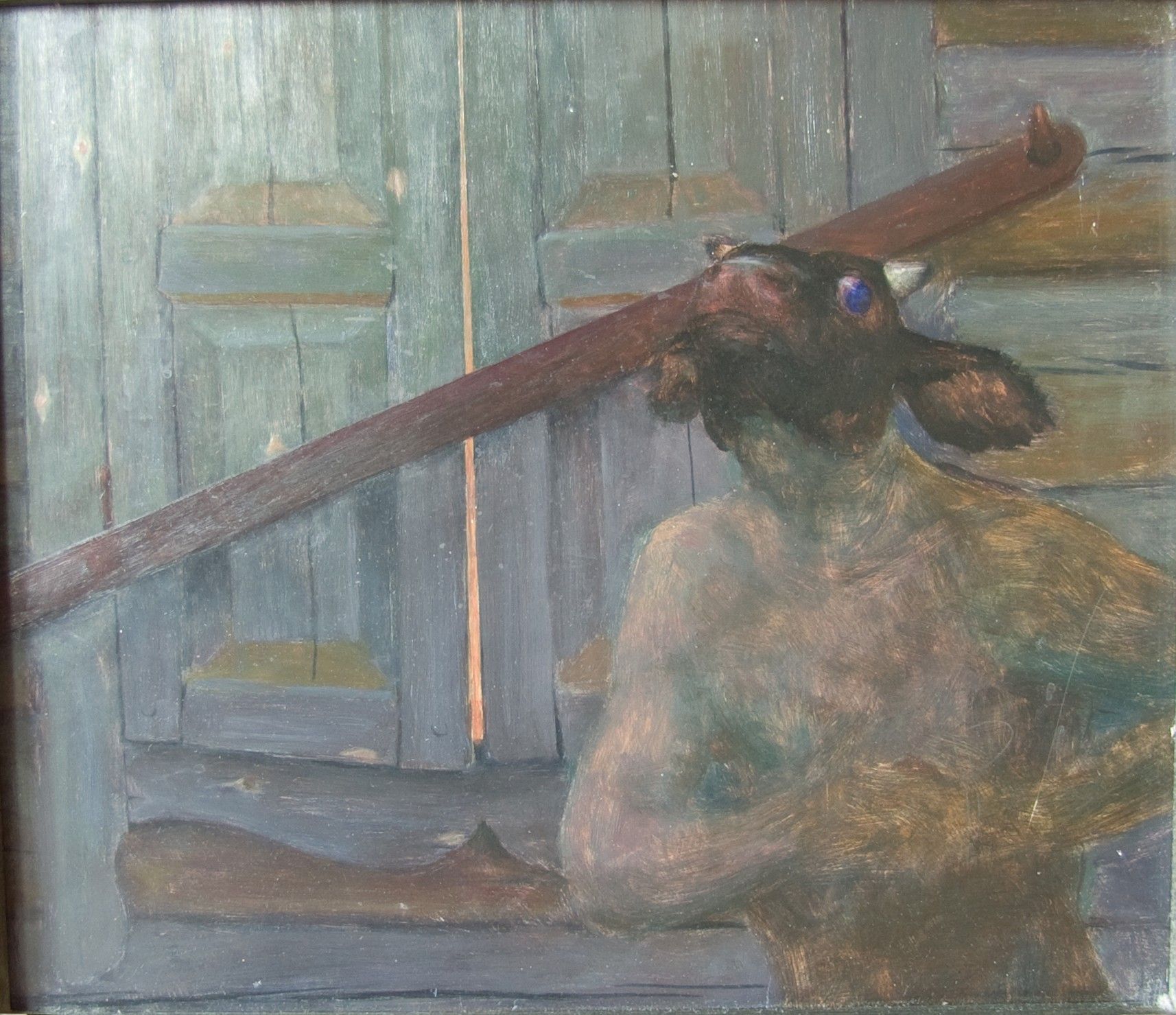

Понять художника очень сложно. Можно тысячи раз перебирать факты его жизни. Находить связи между образами и реальными объектами, людьми, местами. Читать те же мифы. Но всё равно так и не понять до конца, что же именно хотел передать художник. Я думаю, никто, кроме автора не может полностью понимать картины. Даже близкие и родные не могут, что уж нам, сторонним зрителям. Однако вся прелесть настоящих творческих работ в том, что каждый увидит в них что-то своё. Что-то отзовётся в душе и картина станет понятна, но уже по своему для каждого.
Я уверен, что мне ещё много предстоит узнать о скрытых мелочах творчества Сергея Кухто. И я с нетерпением жду следующей выставки. Когда снова смогу увидеть эти необычные картины и окунуться в атмосферу покоя, прогуливаясь вместе с Полканом и его спутницей по нашим родным полям и озёрам.
